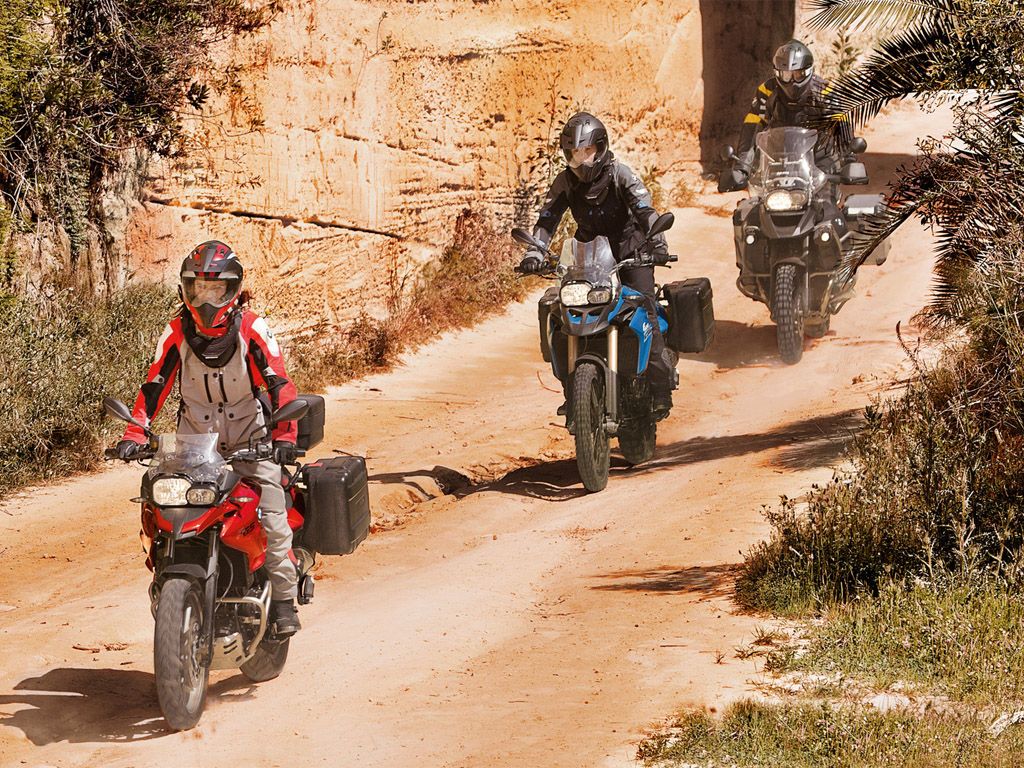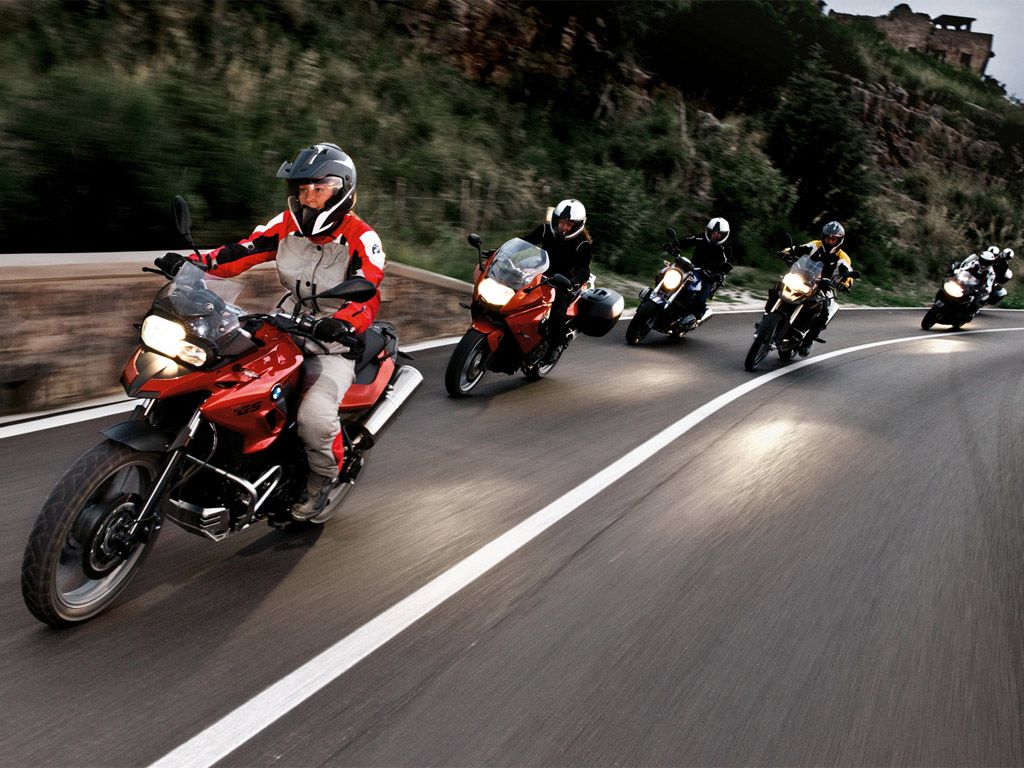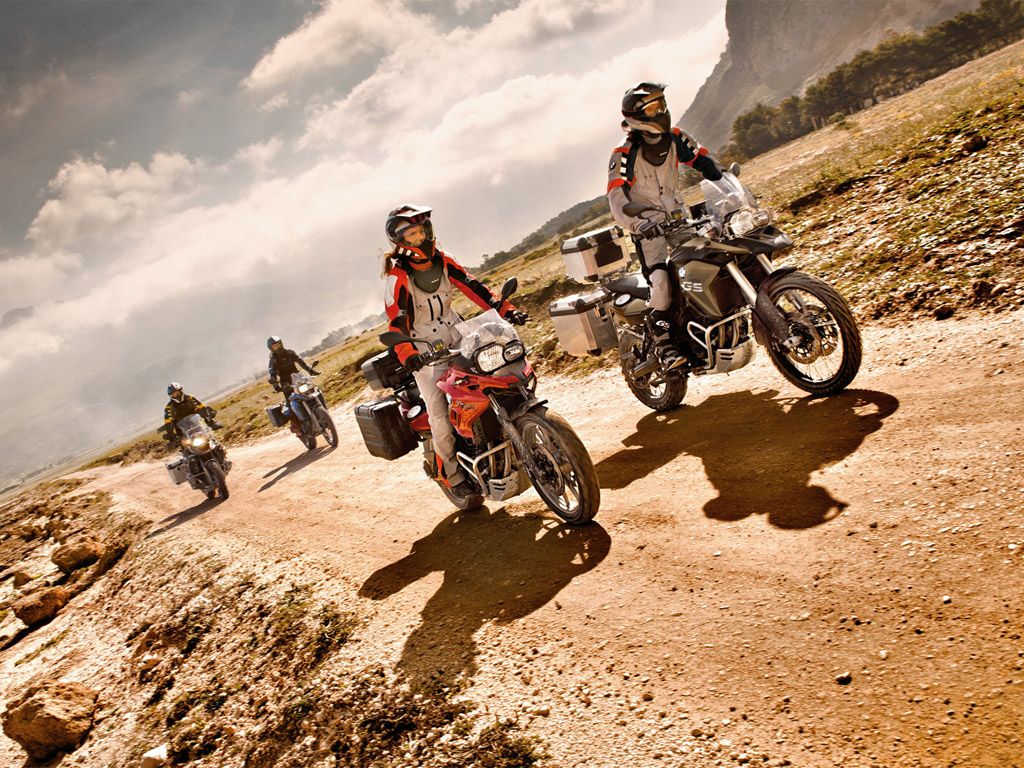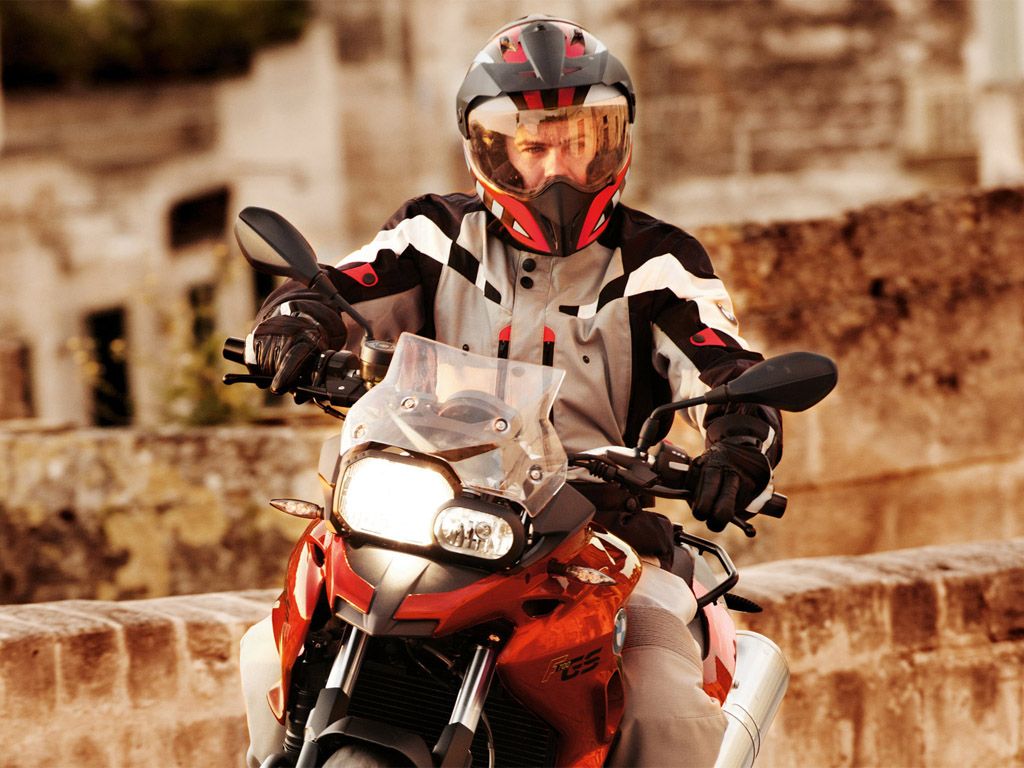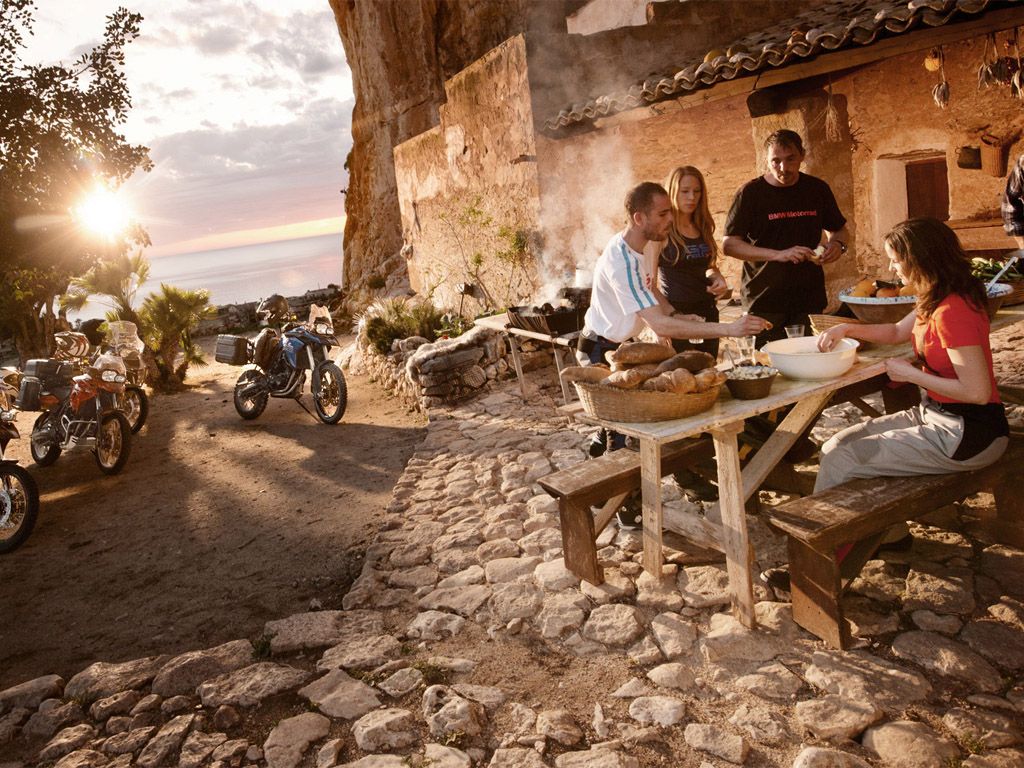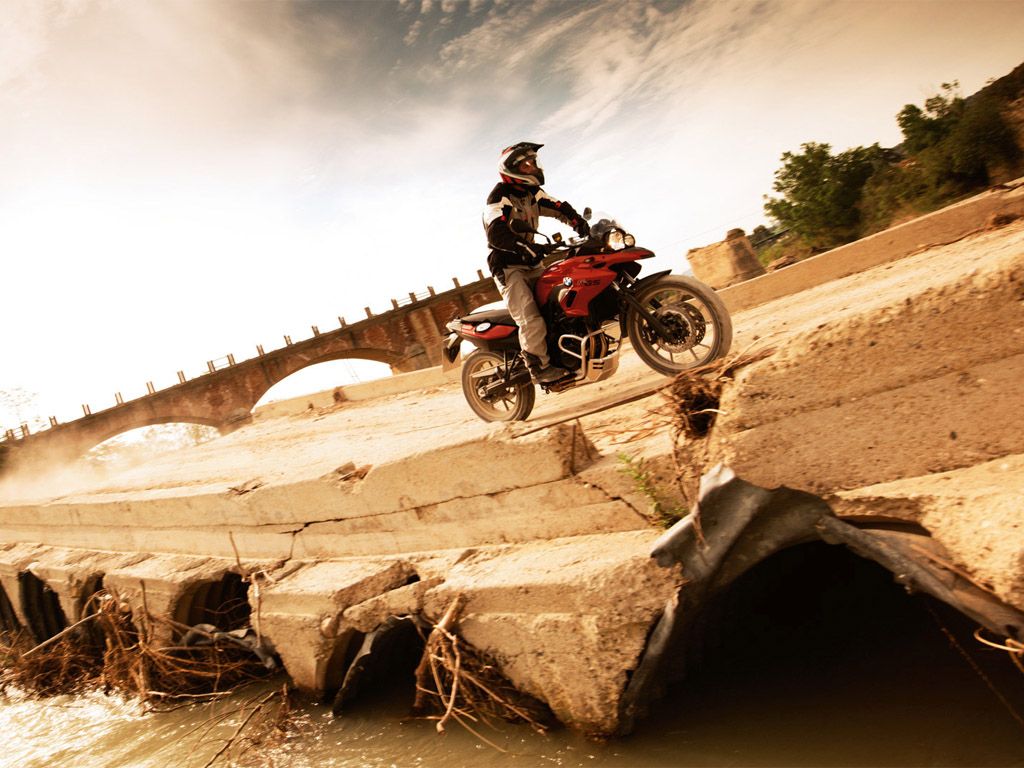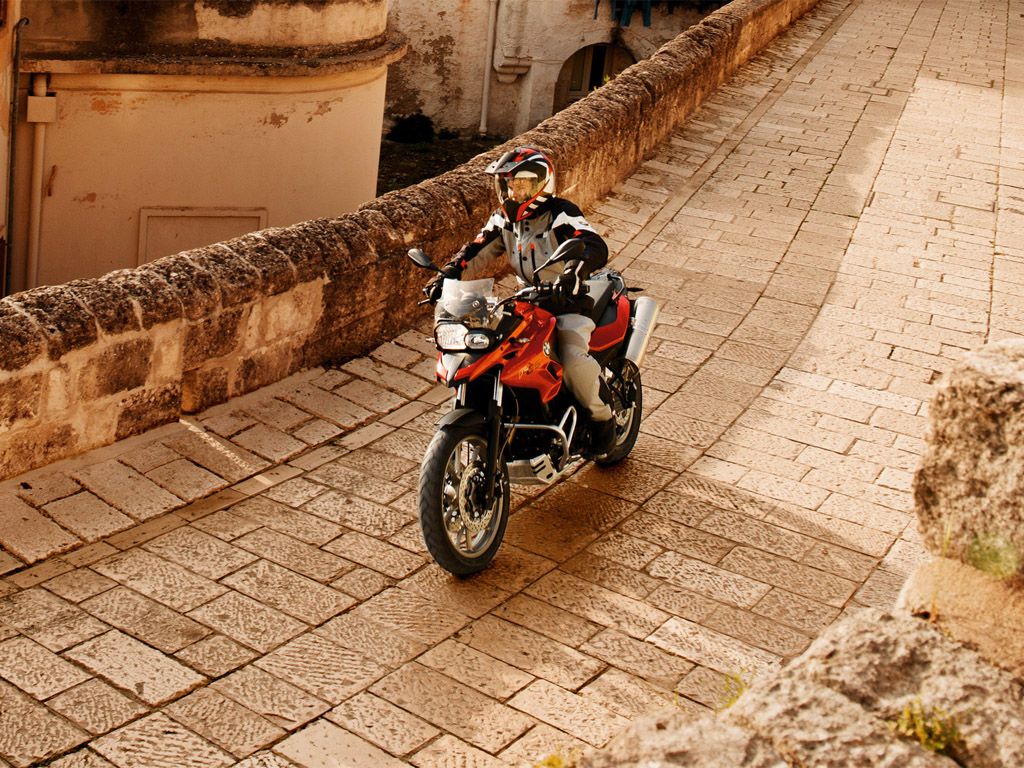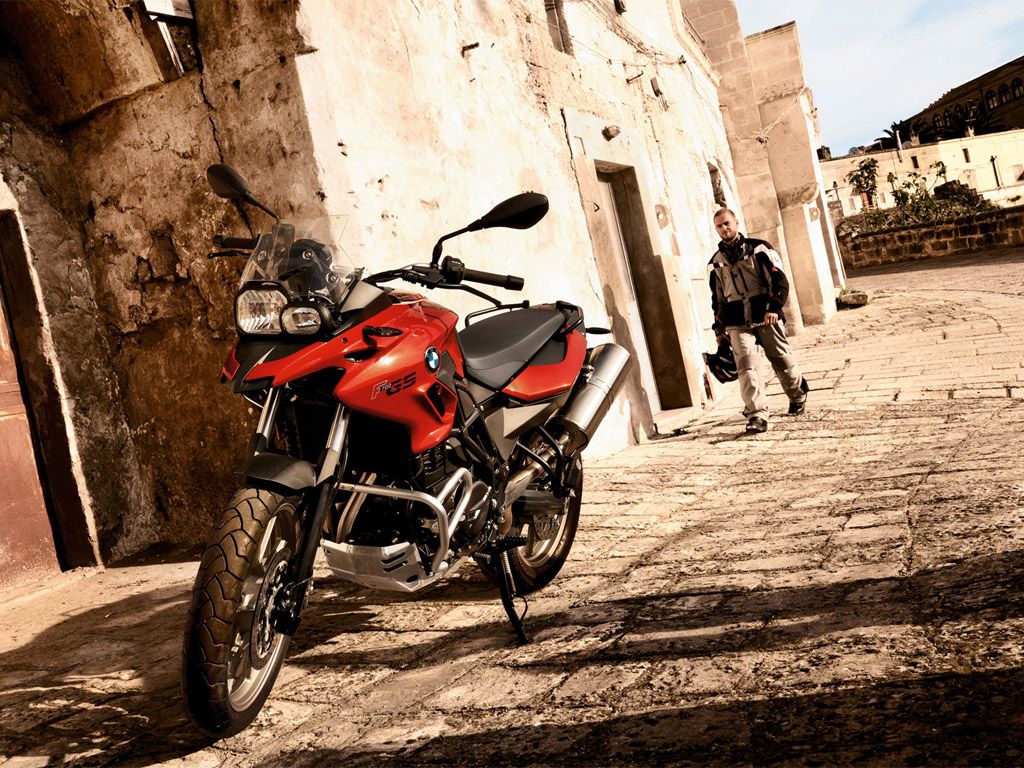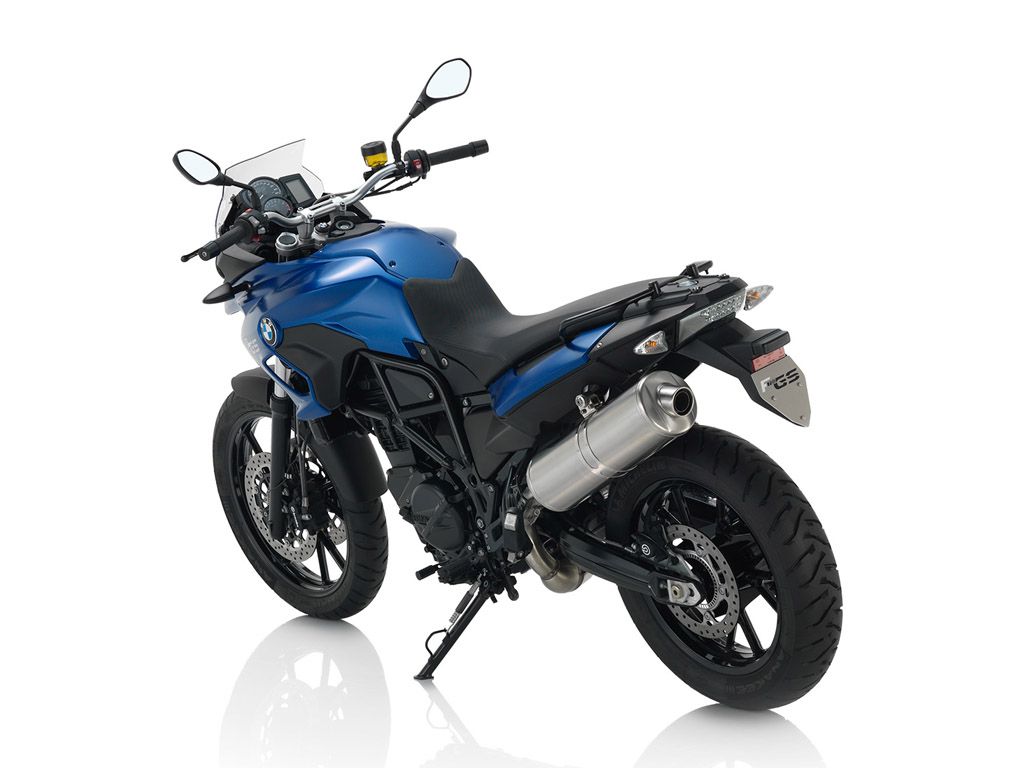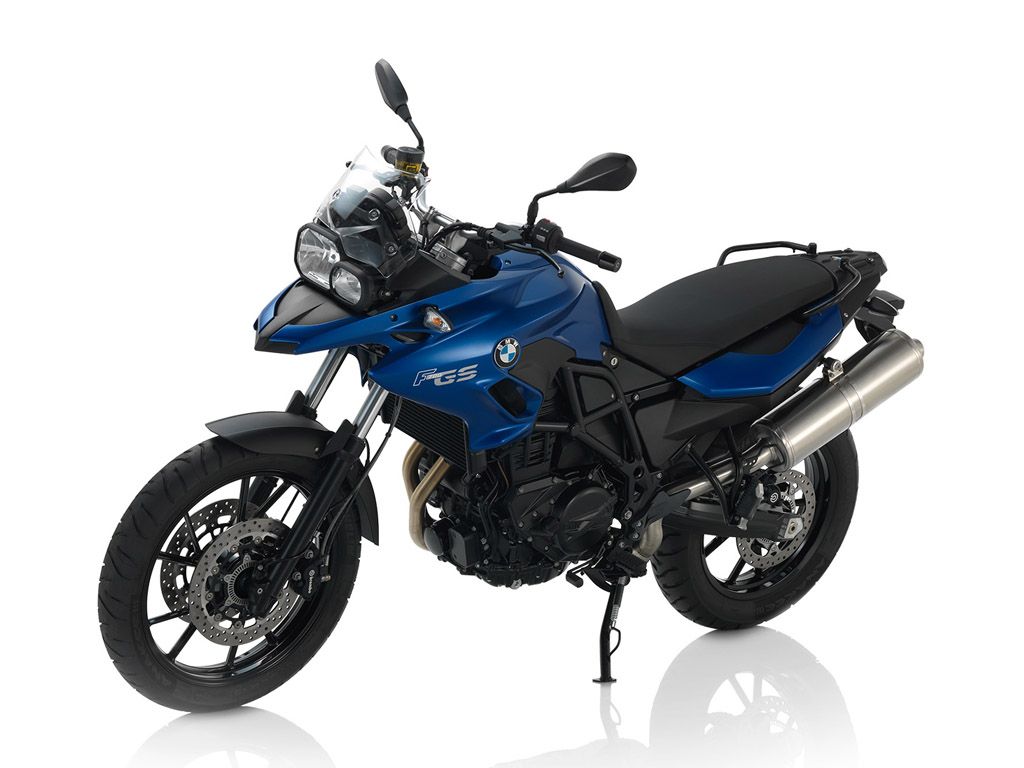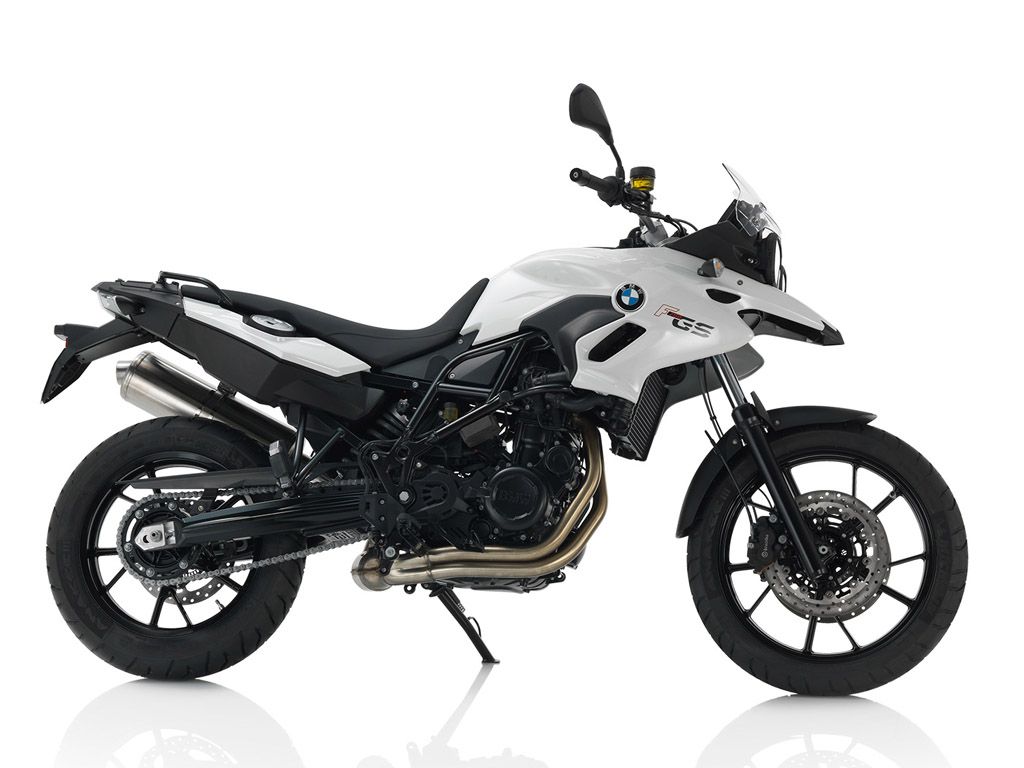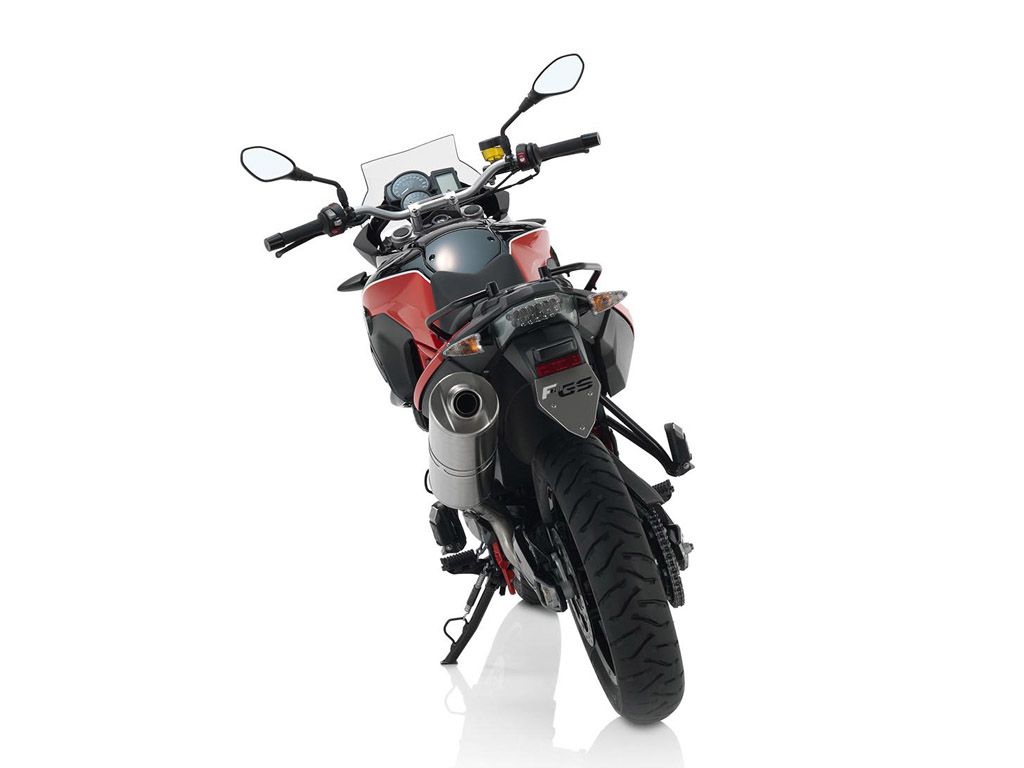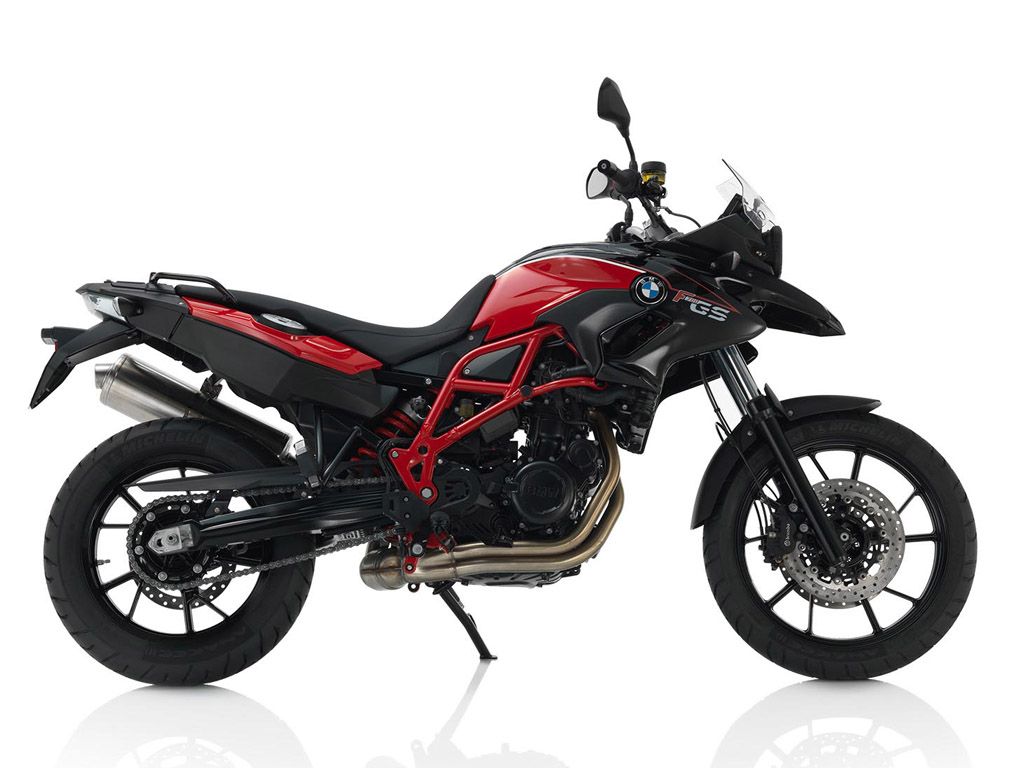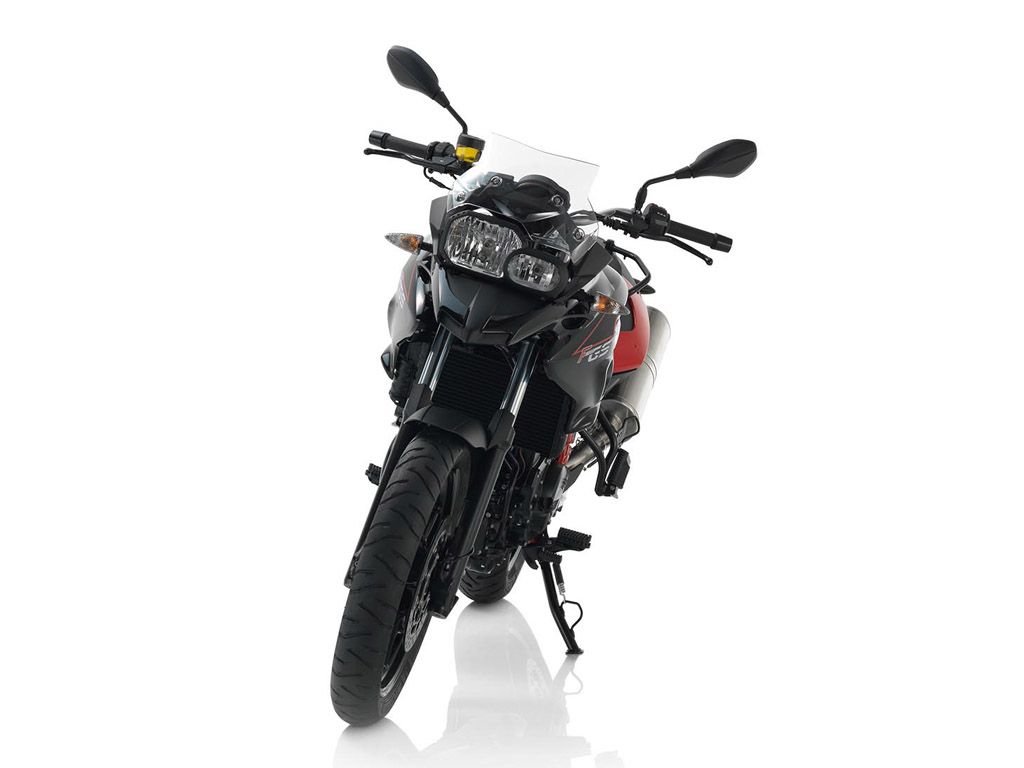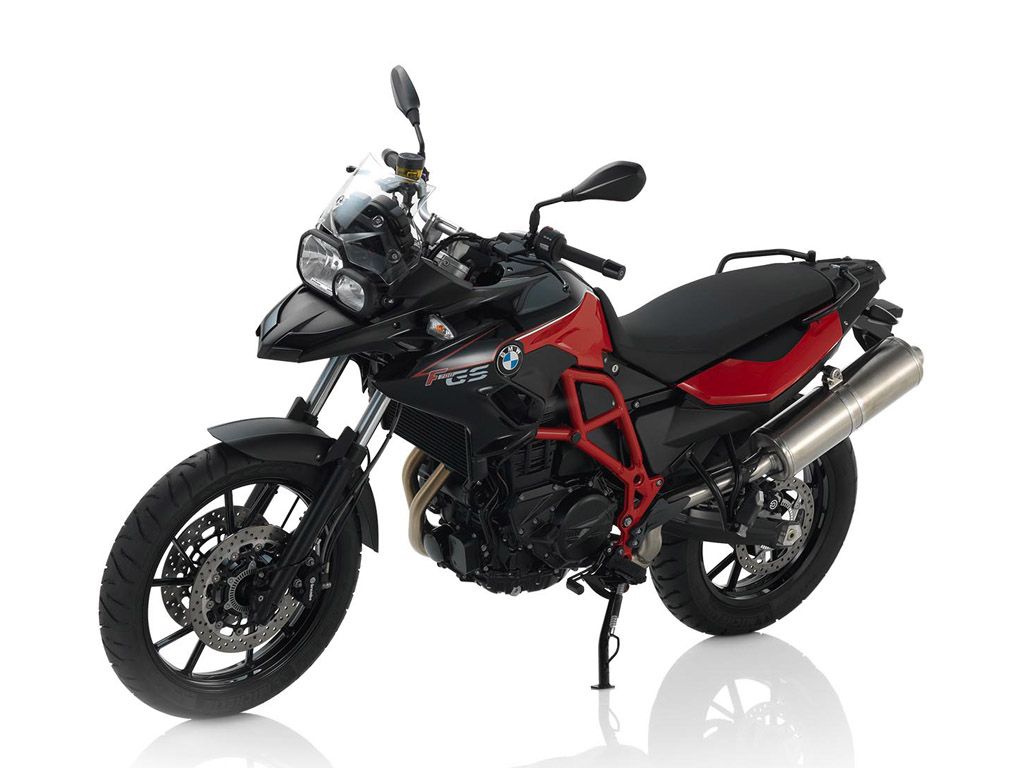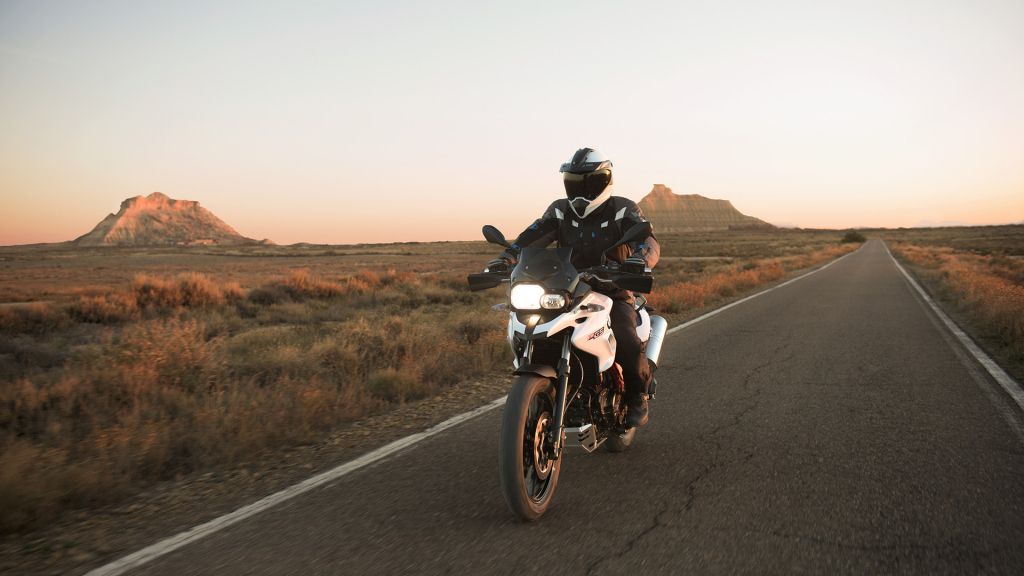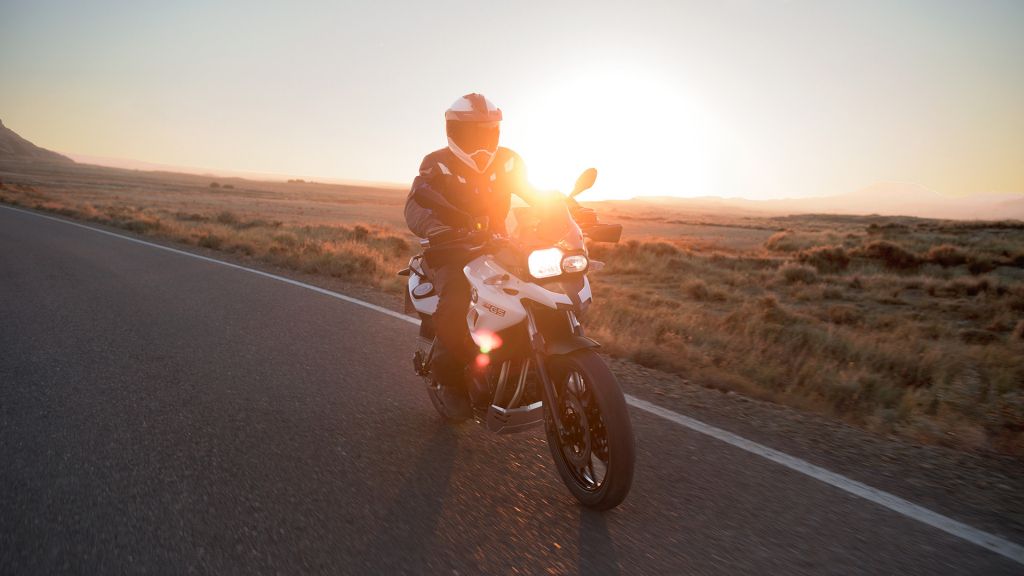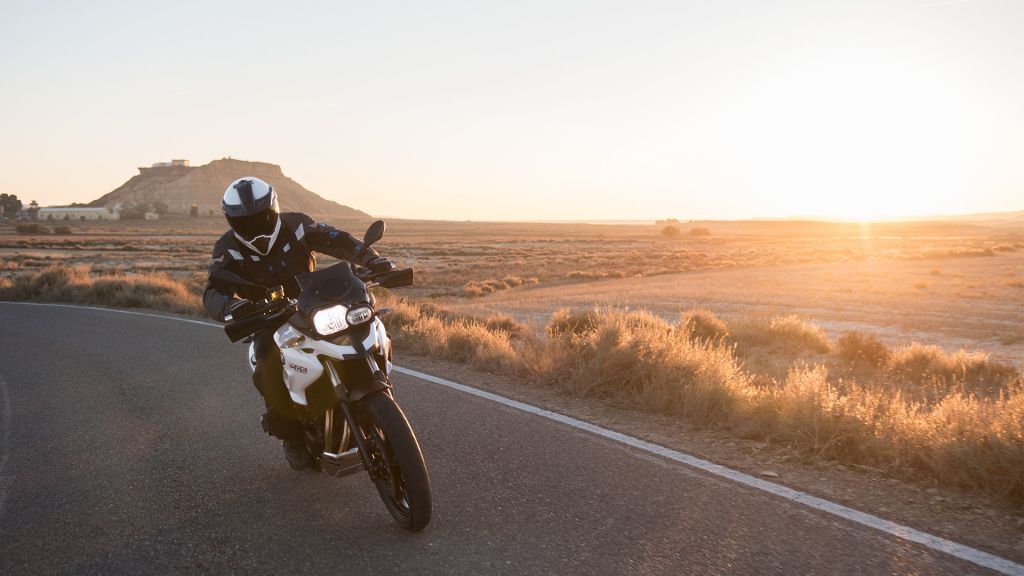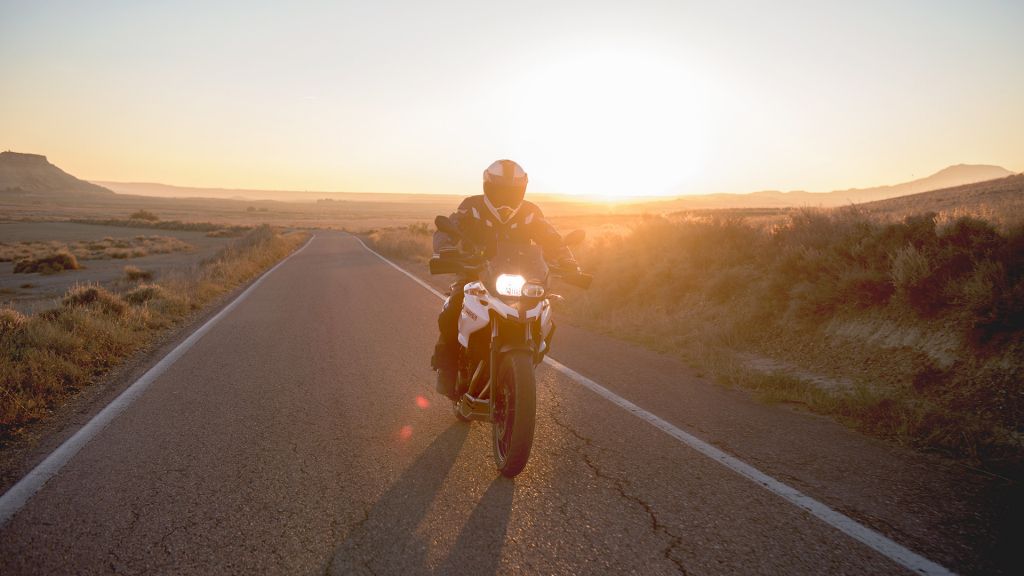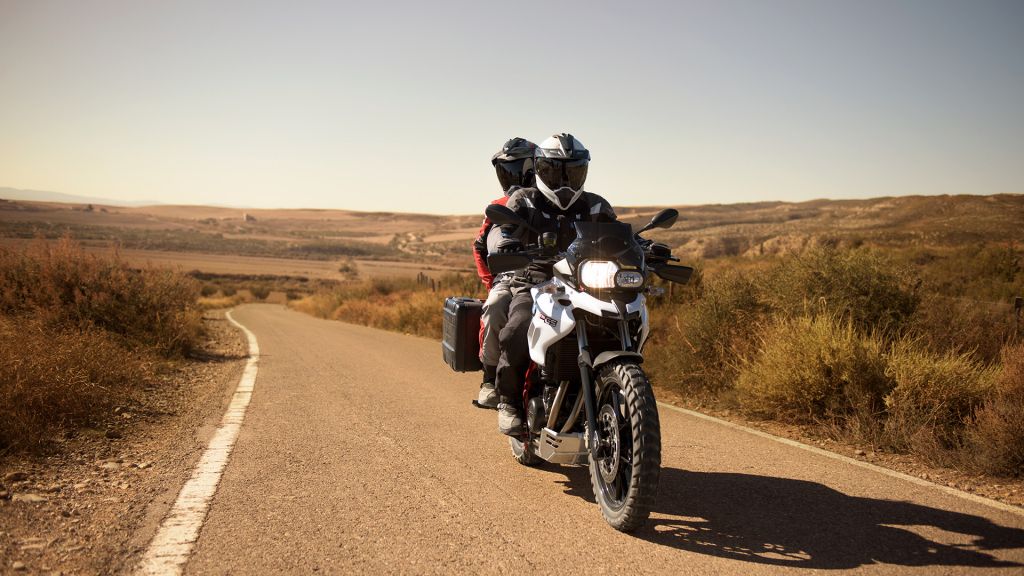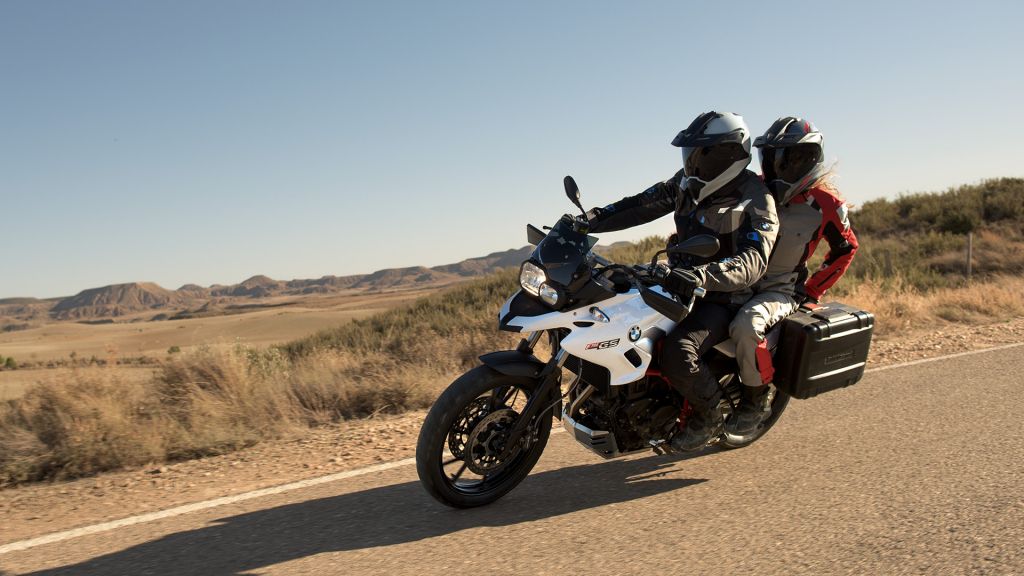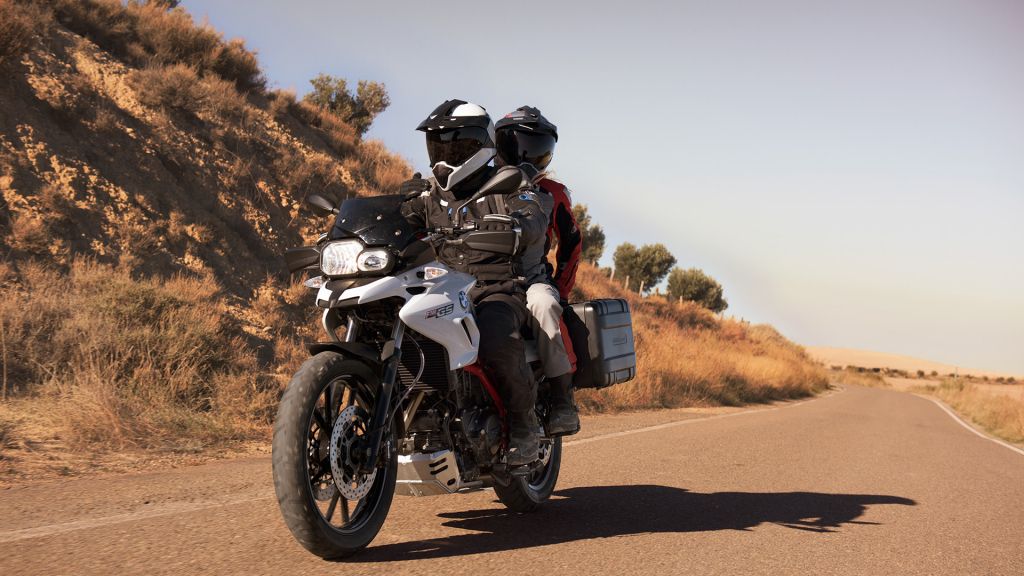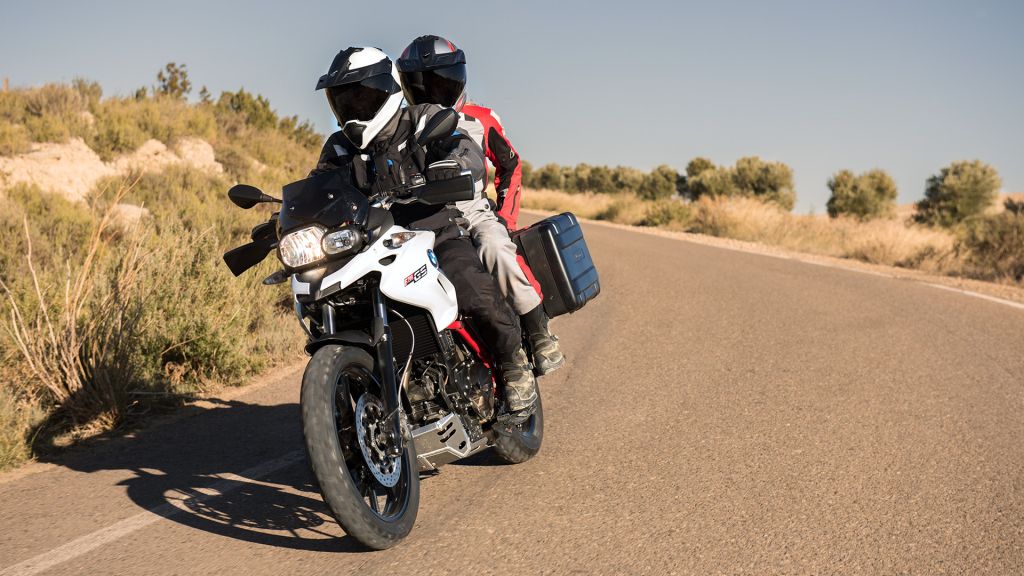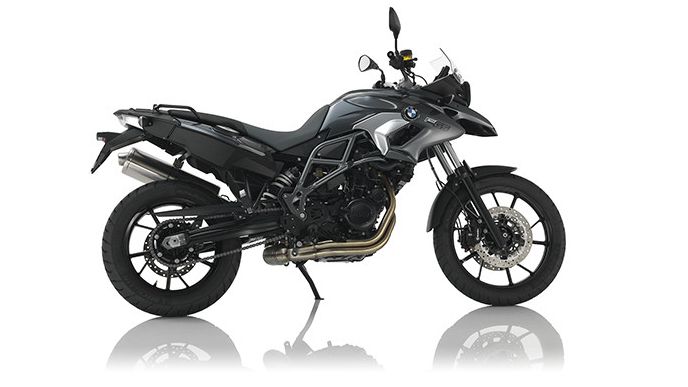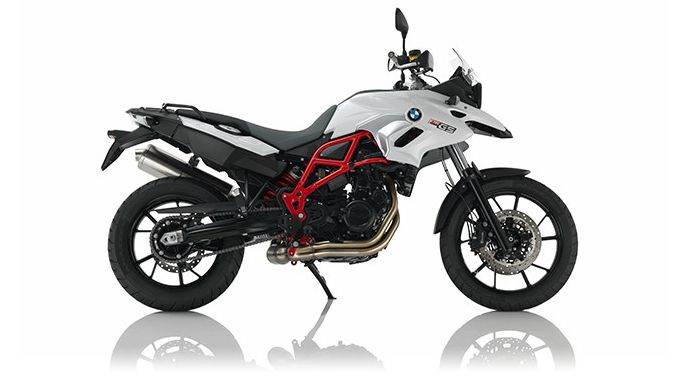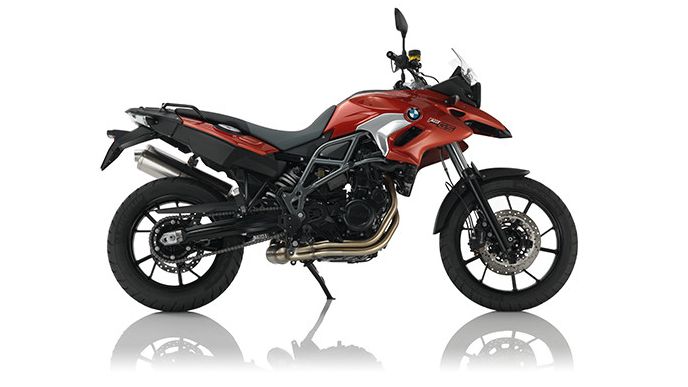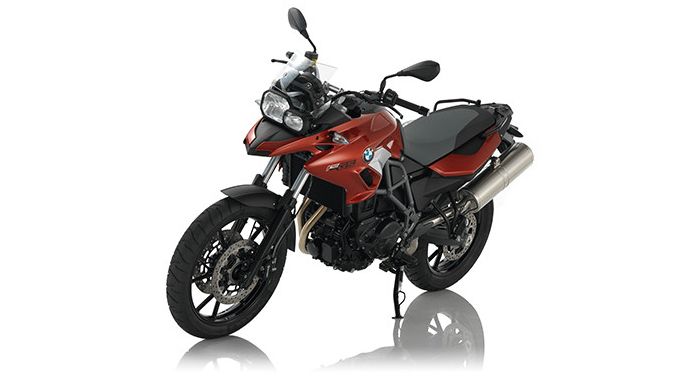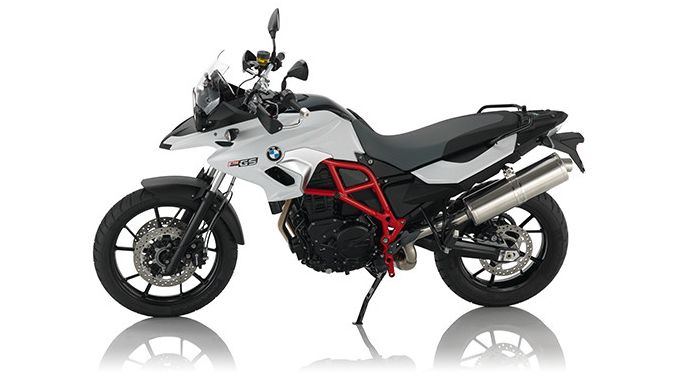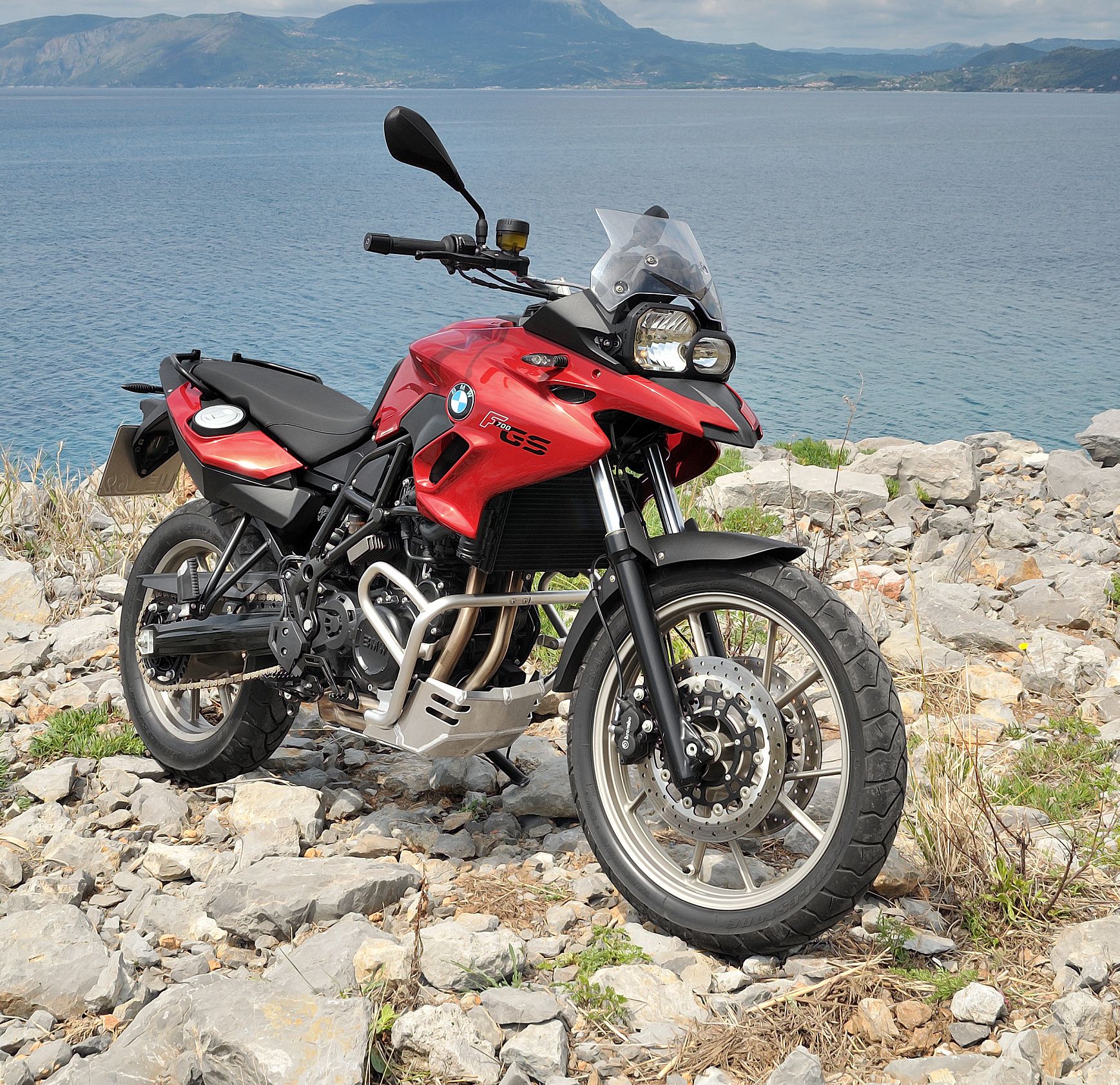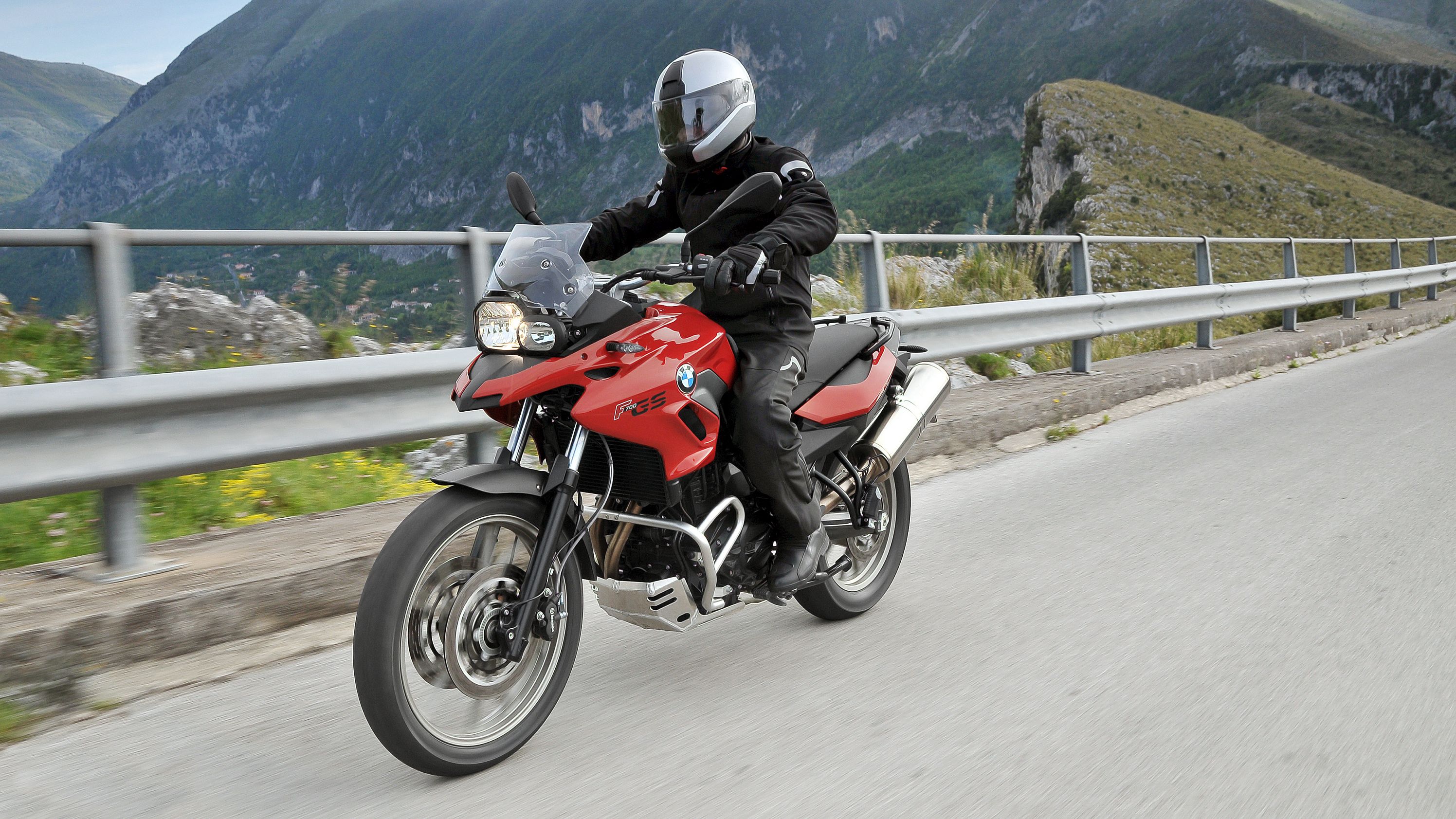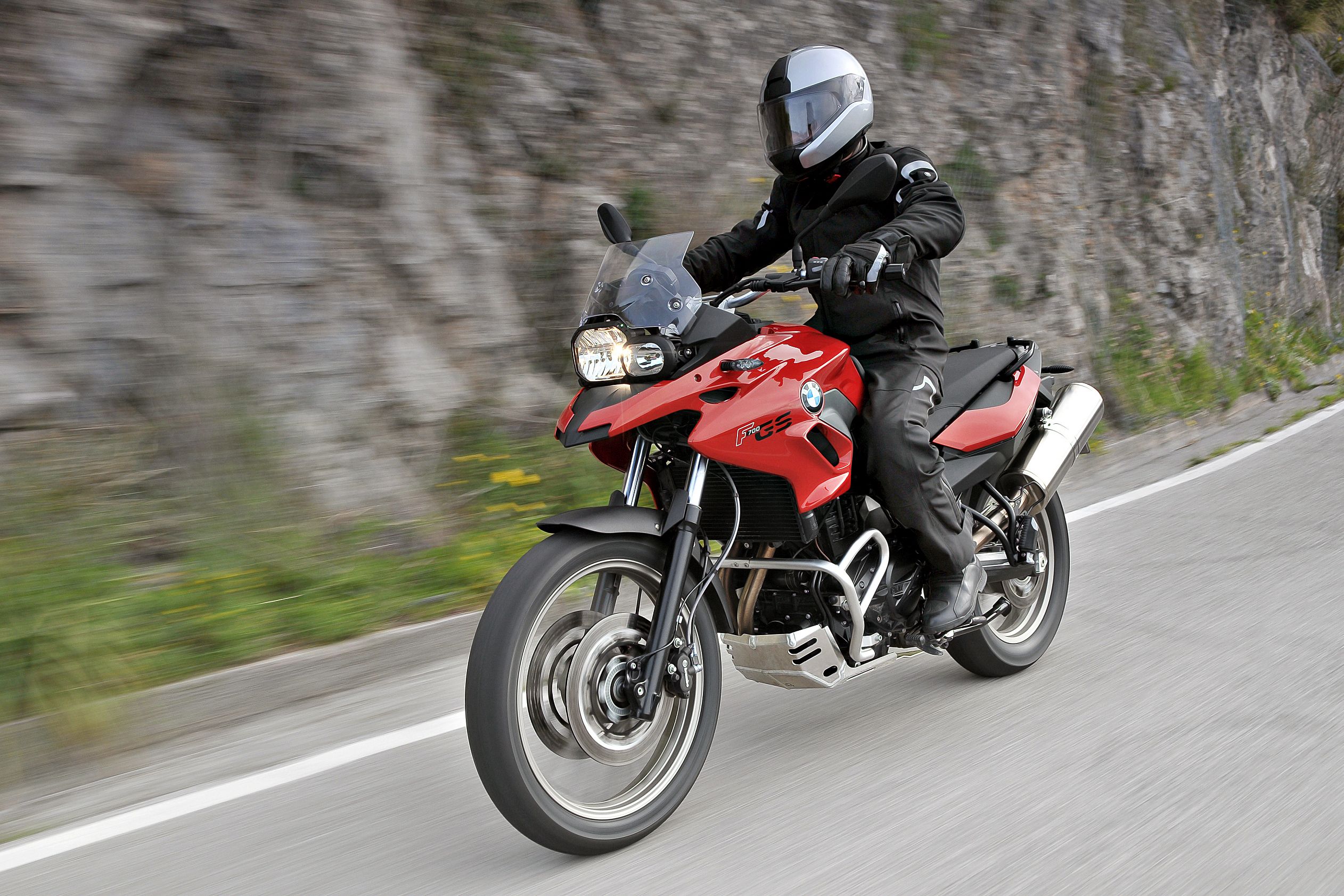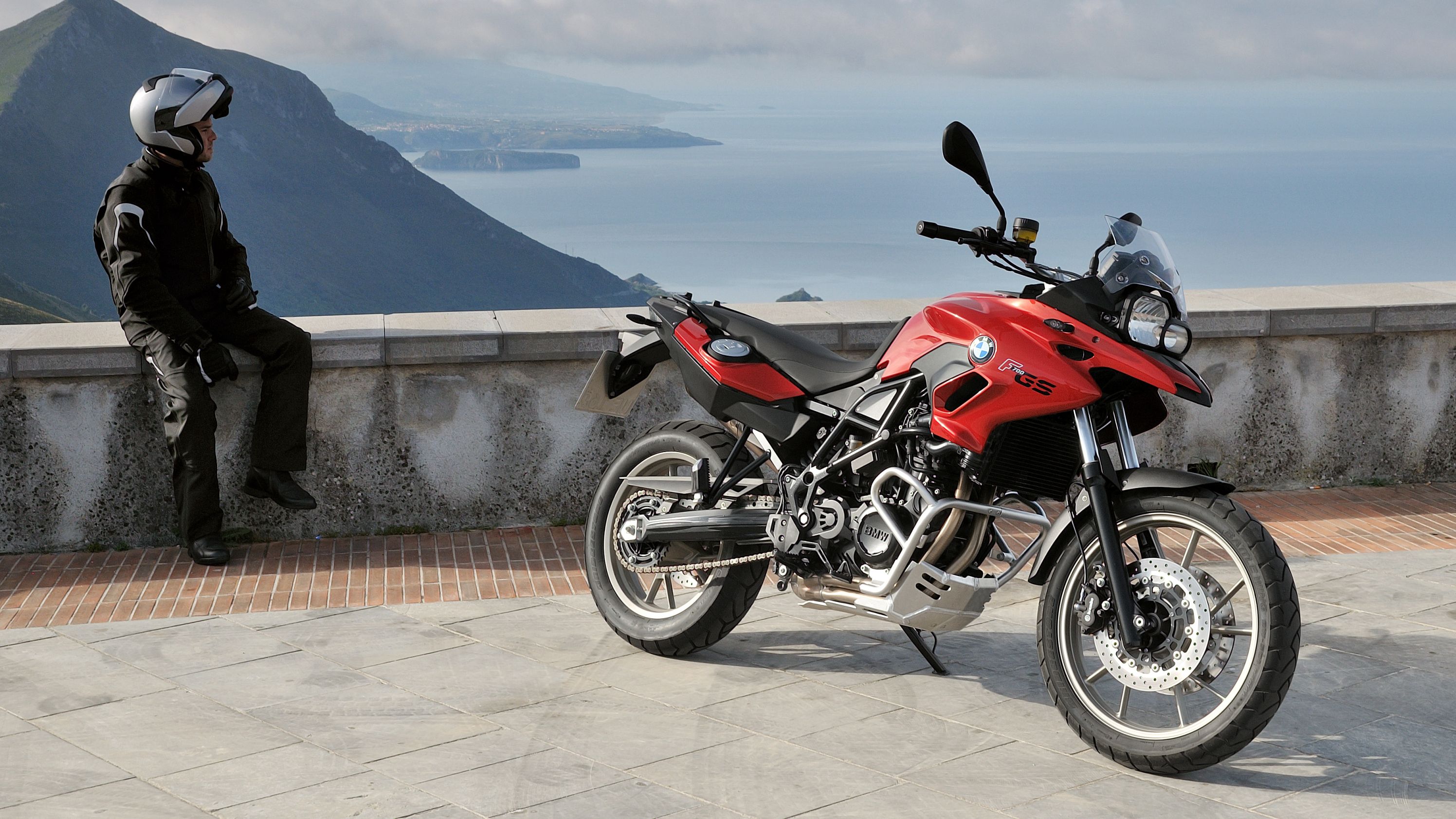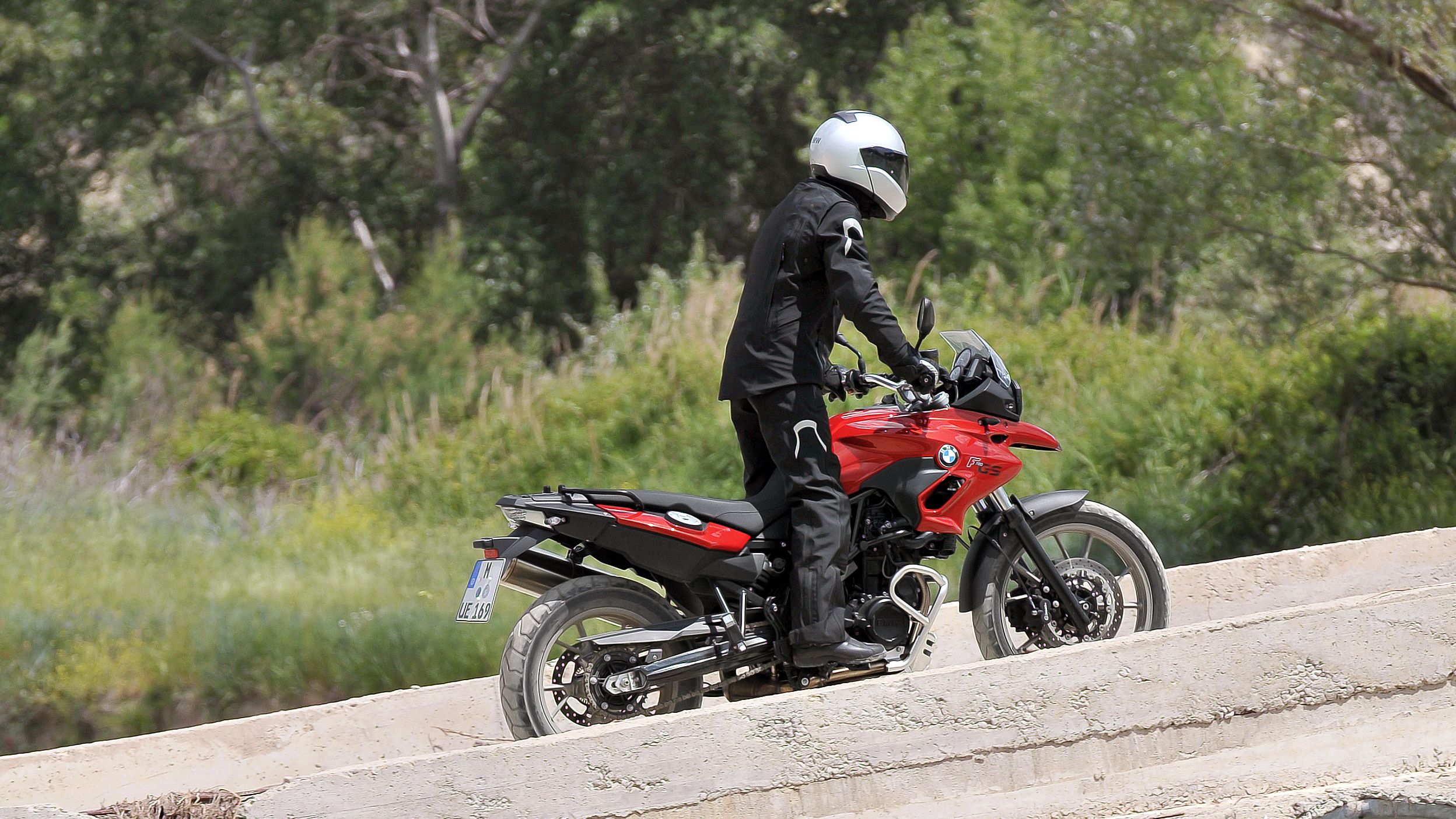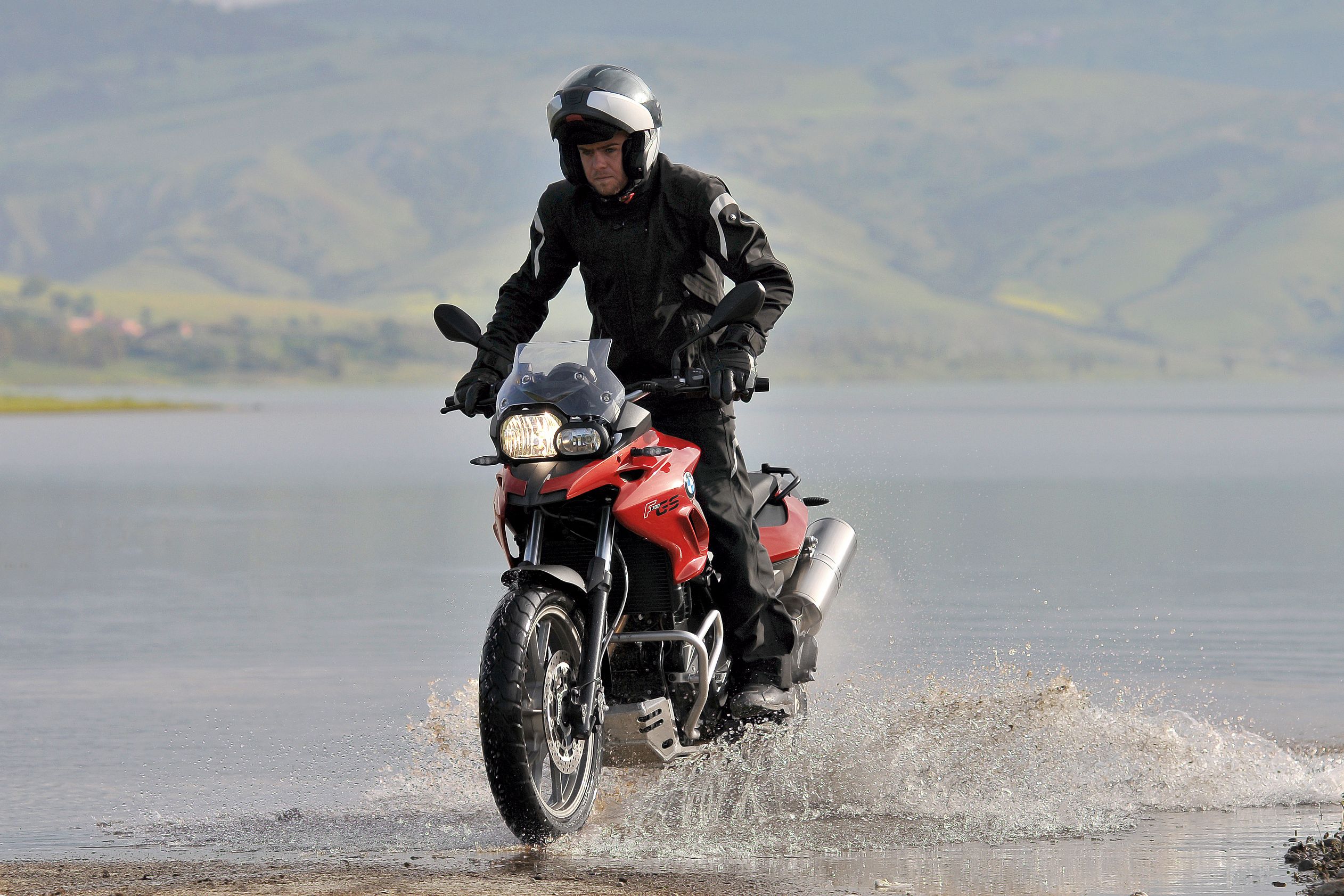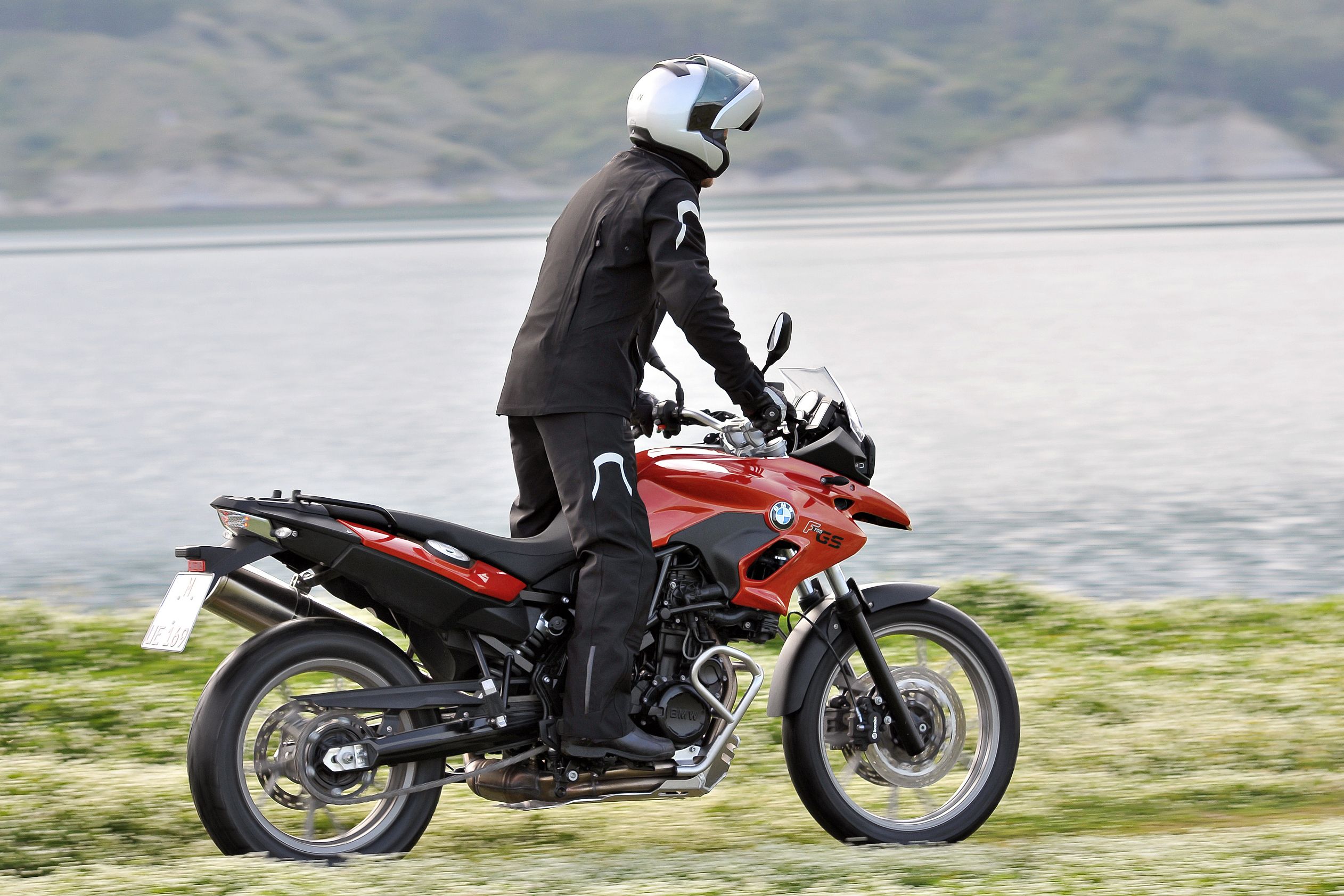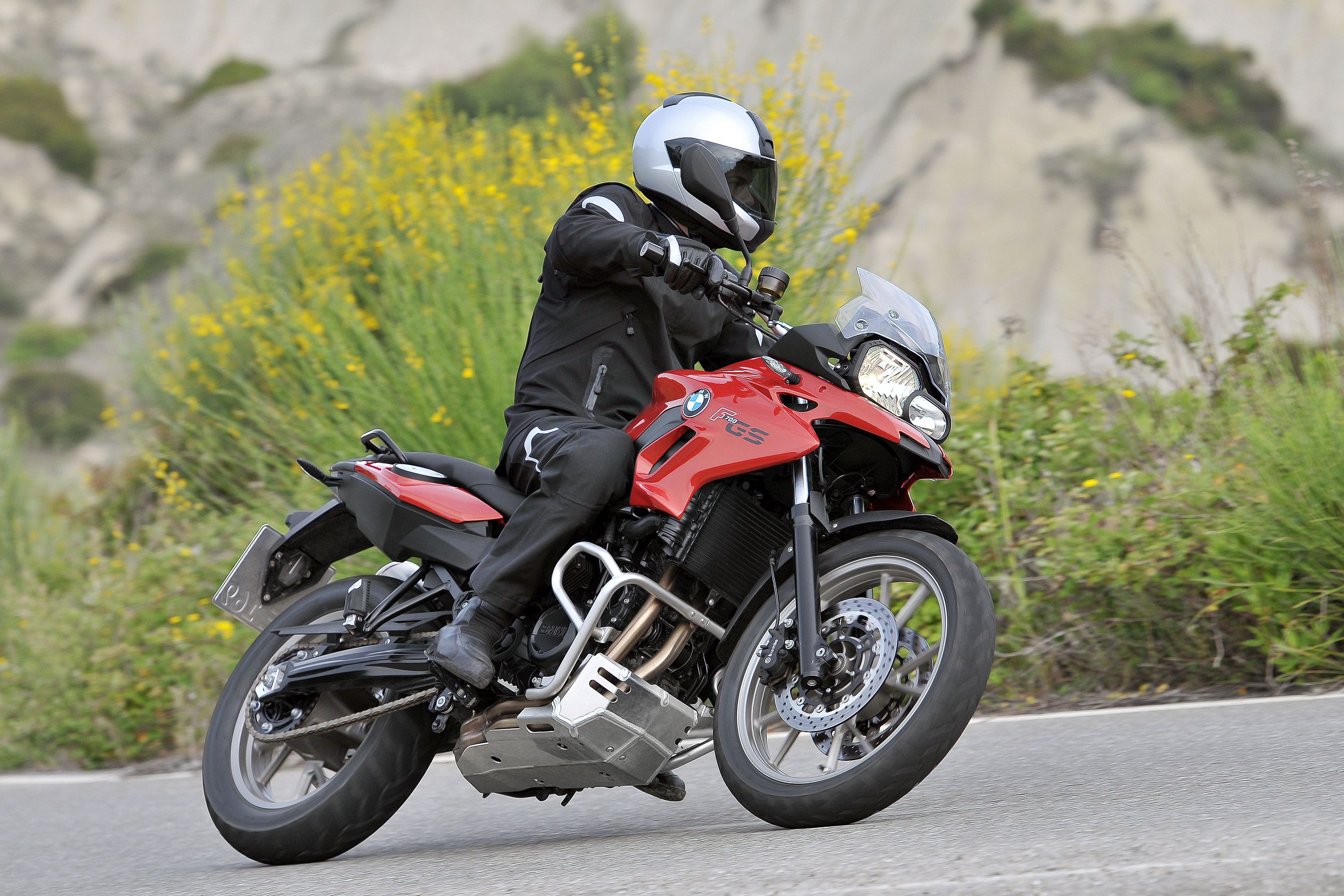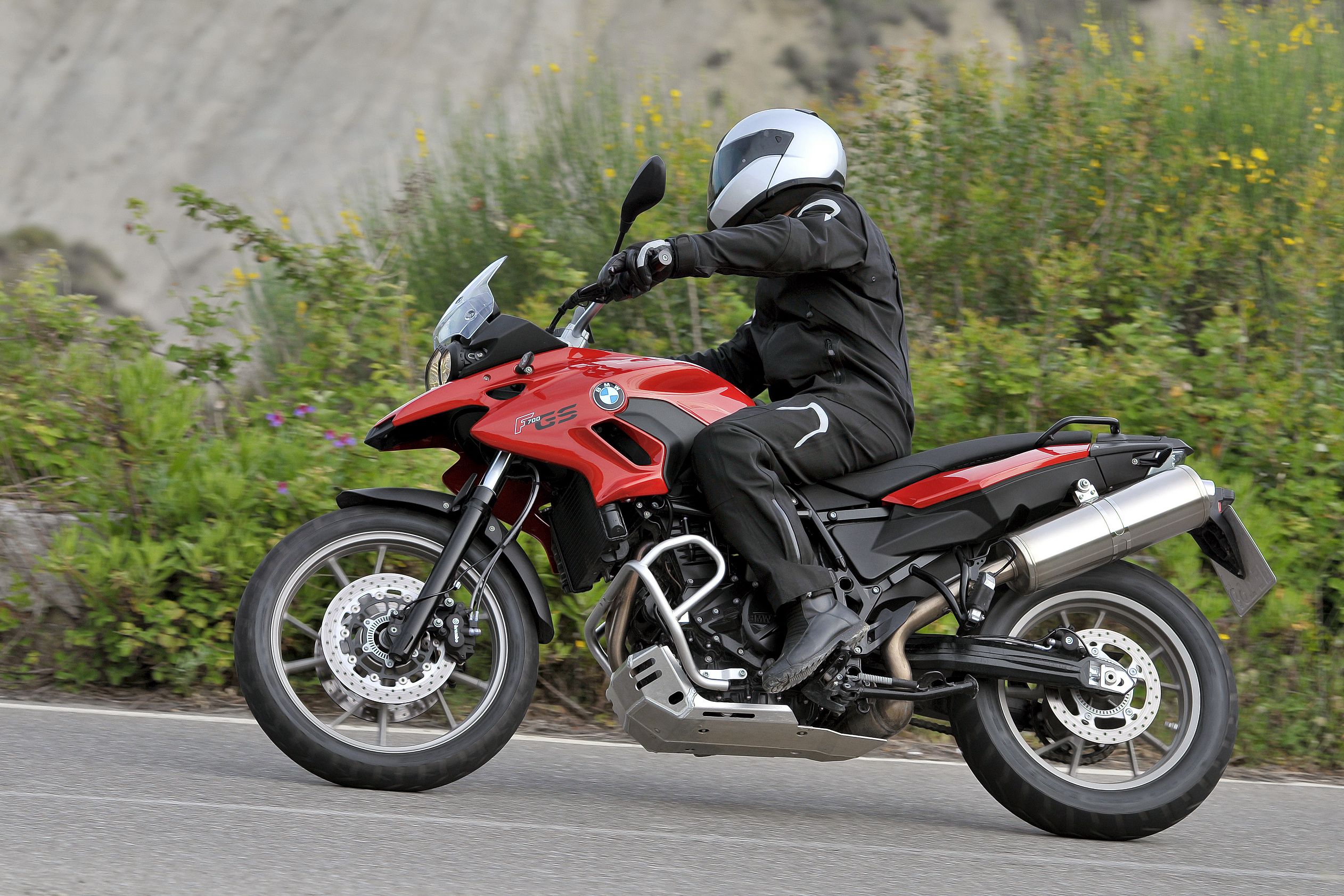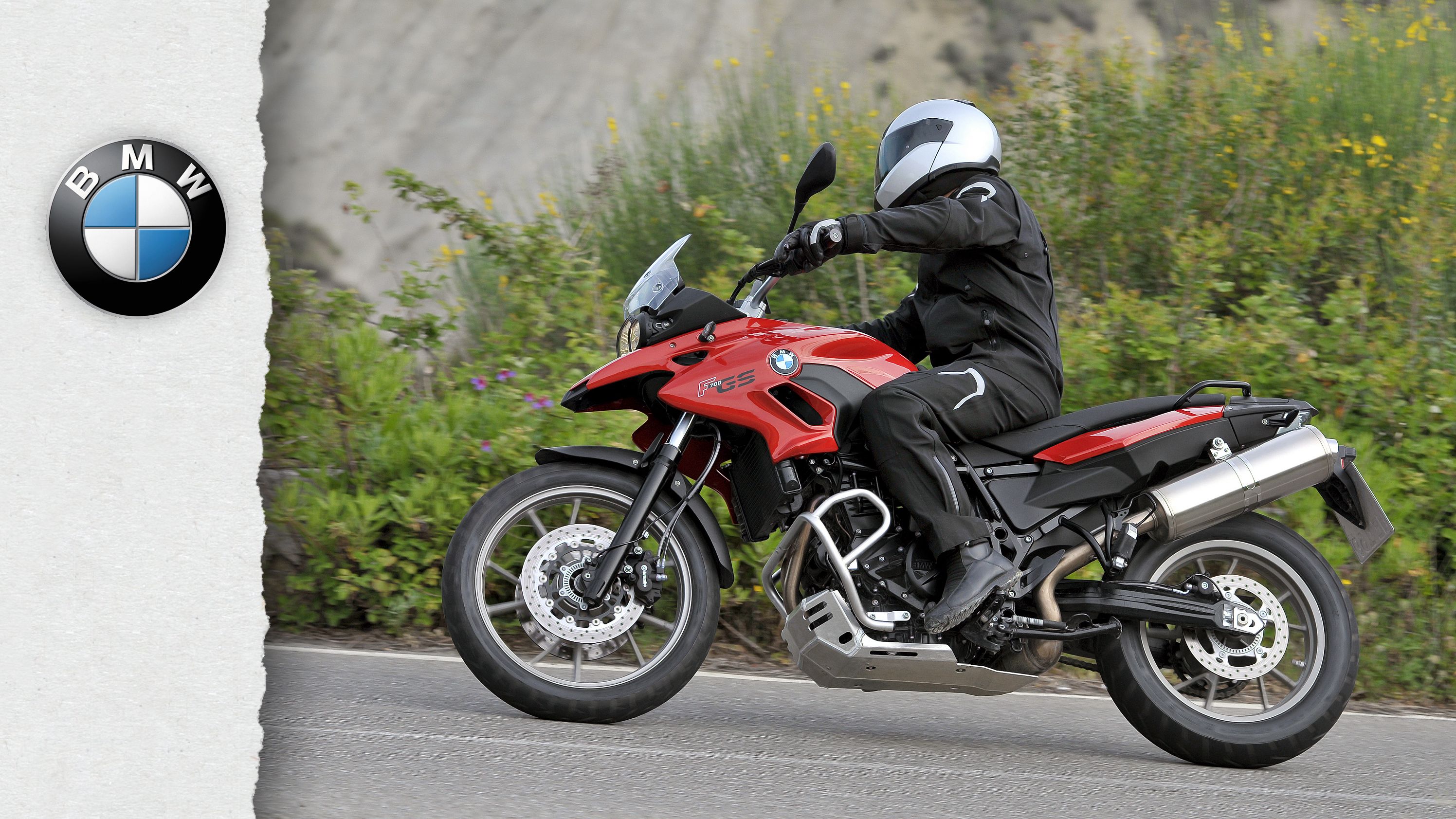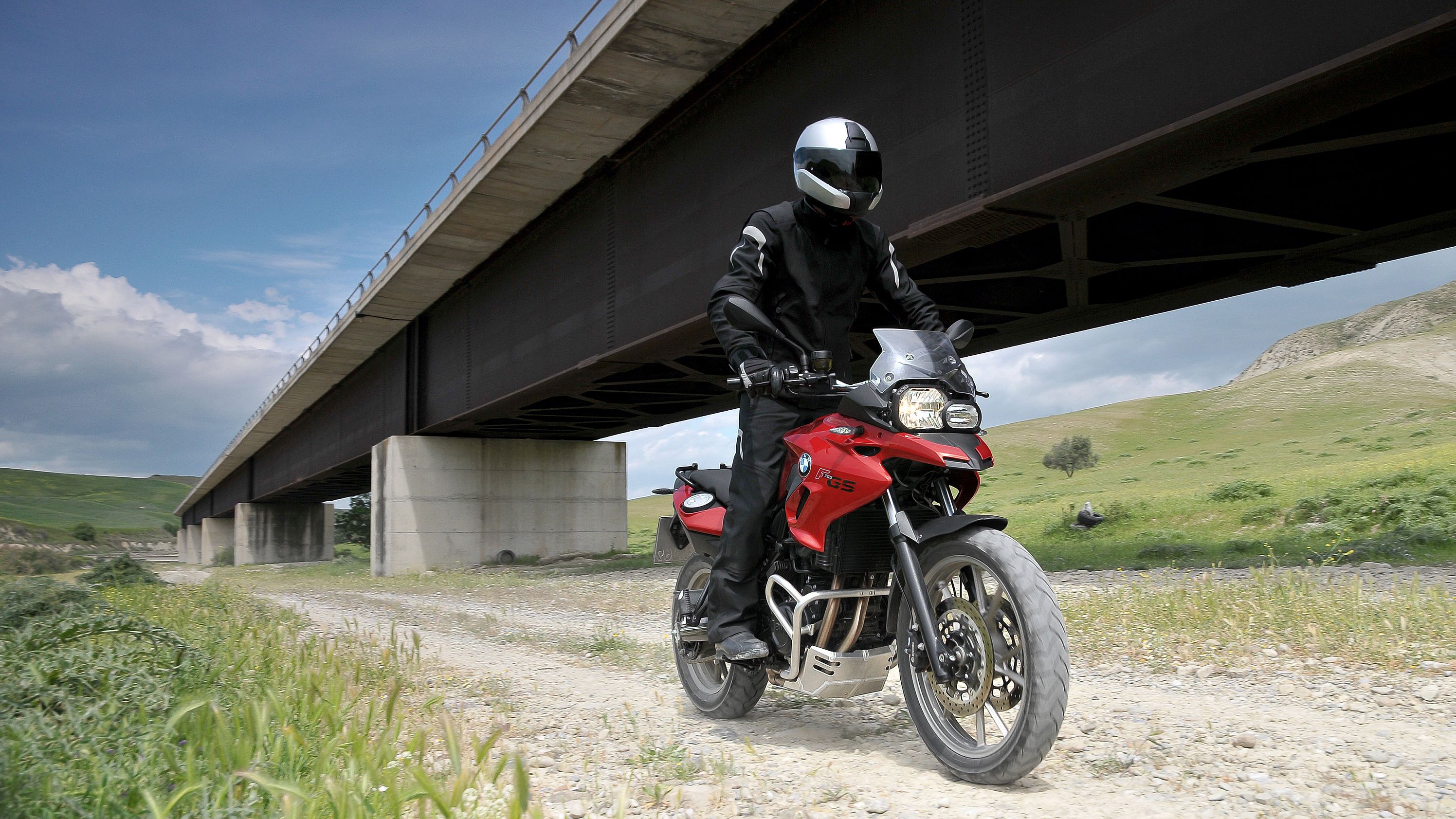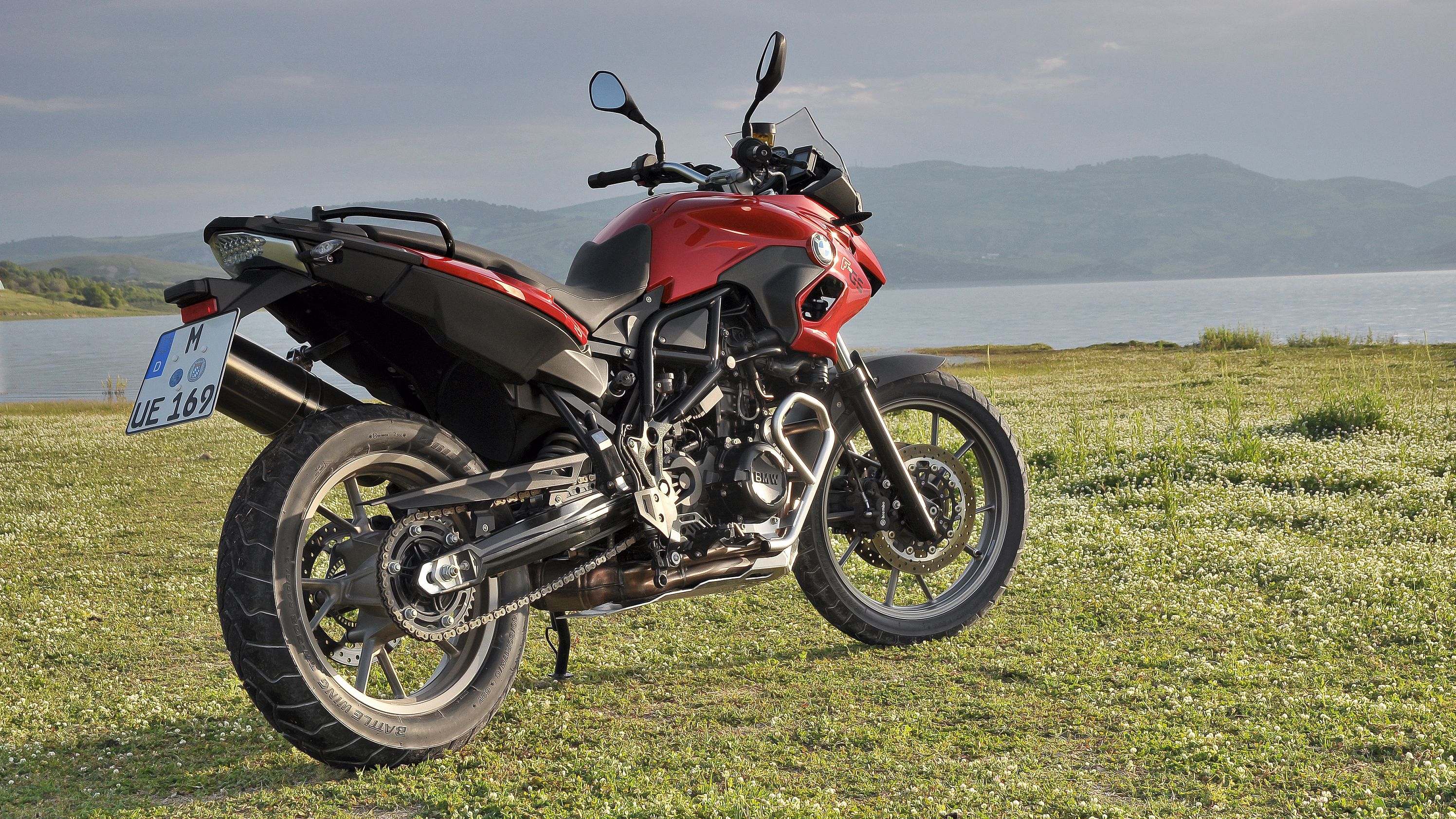Having gone into MY 2017 with some substantial updates, the 2018 BMW F 700 GS stays competitive in the ever-growing adventure market. Outfitted as the more road-oriented version next to its F 800 GS stablemate, the F 700 GS has a lower seat height, a slightly remapped engine, and chassis components with an eye toward pavement riding.
Continue reading for my review of the BMW F 700 GS.
2015 - 2018 BMW F 700 GS
- Make: Array
- Model: 2015 - 2018 BMW F 700 GS
- Segment: Array
- Engine/Motor: Parallel-Twin
- [do not use] Vehicle Model: Array
BMW F 700 GS Design
BMW's F 700 GS replaced the 650 version back in '12, and the line is still going strong as we move into the '18 MY. Adventure bikes have definitely settled onto a particular mold and this ride fits right in. We have a standard front fender and a bird's beak fairing leading the way with a minimal flyscreen that provides more protection for the newly redesigned instrument cluster than the rider, to be honest. Asymmetrical high- and low-beam headlights break up the front end a little bit, and give the ride a decidedly European vibe that I kind of like.
Cheek fairings house the radiator and channel cooling air through the rad while protecting it from the sides. Typical adventure-bike flylines carry on from there over the slight fuel-tank bump before the steep drop to the bench seat. A slight rise at the ass end finishes the ride with a modest p-pad and grabrail for off-the-floor, two-up capability.
Below the tank and behind the fairing, the exposed Trellis frame adds a bit of a naked vibe that fits well with the overall look while adding yet another flavor to the mix. Though marketed as an all-road adventure bike with an emphasis on blacktop capabilities, this ride can serve in another role; that of an urban commuter.
Hard panniers and a soft tank bag are available through the accessories catalog to provide for some carrying capacity, and of course, the unoccupied pillion seat makes a handy cargo area, especially with the grab rail right there to hook your bungee net. Other small storage devices such as luggage and tool rolls are also available, so you can easily set up the F 700 GS for the commute to school or office with plenty of room for your doo-dads.
Folks like to market rides like this as adventure/tour bikes, but truth to tell, most will never see the brown, and few will actually be used to tour, so this is really a commuter bike at its core. If you do decide to take a trip, BMW offers a number of navigator/chart-plotter devices that provide touchscreen operation and GPS accuracy for convenient routing and navigation.
BMW F 700 GS Chassis
The plainly visible Trellis frame comes made up of tubular-steel members for a stiff but light assembly that adds a bit to the “cool factor” where it peeks out from under the cowling. A beam-style, two-side swingarm finishes the bones in cast aluminum to keep unsprung weight low. The 26-degree rake angle pushes the wheelbase out to 61.3 inches with 3.7 inches of trail for an agile ride character.
I'm a little disappointed with the front suspension; it runs standard, 41 mm, right-way-up forks with nothing at all in the way of adjustment. The central-mount monoshock springs the swingarm with adjustable spring preload and rebound damping so the suspension isn't complete vanilla, but I know that BMW has much better suspension on the top shelf, they just aren't sharing it here.
A 19-inch rim mounts the front hoop with a 17-inch rim for the rear, and they're made of cast aluminum in another effort to keep unsprung weight as low as possible. Suspension travel is generous with 6.7 inches at the front axle and rear, plenty for the grittiest urban environs or poorly-maintained backroads, and even enough to negotiate light terrain.
Twin-piston calipers bite the dual 300 mm front brake discs, with a single-pot caliper to bind the 265 mm disc in back. Beemer uses its proprietary ABS that provides overwatch to prevent wheel lockup due to overbraking, but can be turned off if you don't need/want such electronic hand-holding. Unladen seat height is average at 32.3-inches tall, but Beemer offers a number of seat options that can boost that up to 33.9 inches or pull it down to 30.1 inches for a wide range of body types.
|
Frame: |
Tubular steel space frame, load-bearing engine |
|
Front suspension/ Travel: |
Telescopic fork, Ø 41 mm/ 6.7" (170 mm) |
|
Rear suspension/ Travel: |
Cast aluminum 2-sided swing arm, central spring strut, spring pre-load hydraulically adjustable (continuously variable) at handwheel, rebound damping adjustable/ 6.7" (170 mm) |
|
Castor: |
3.7" (95 mm) |
|
Steering head angle: |
26° |
|
Wheels: |
Cast aluminum wheels |
|
Rims, front/rear: |
2.50-19 MTH2/3.50-17 MTH2 |
|
Tires, front/rear: |
110/80-19/140/80-17 |
|
Brake, front: |
300 mm Dual floating disc brakes, dual-piston floating calipers |
|
Brake, rear: |
265 mm Single disc brake, single-piston floating caliper |
|
ABS: |
BMW Motorrad ABS (can be switched off) |
BMW F 700 GS Drivetrain
A water-cooled, parallel-twin mill provides the power here, and the electronic engine controls are the stars of the updated features from last year, but first I want to look at the nuts and bolts of the thing. Oversquare, the 82 mm bore and 75.6 mm stroke gives us a 798 cc displacement with a warm, 12-to-1 compression ratio. Dual over-head cams time the four-valve heads, and electronic fuel injection manages the induction with a little help from the all-new, ride-by-wire throttle control that eliminates cables in favor of wires for precise adjustments. This also enables the ride-mode function that lets the rider choose between the “road” and “rain” power-delivery profiles, another nice bit of wiggle room for personal preferences.
A multi-plate wet clutch couples engine power to the six-speed gearbox, and a simple-but-tough chain drive makes the final connection to the rear wheel. As with the front forks, I'm a little disappointed at the lack of a slipper clutch here. I mean, even if you aren't worried about wheel hop on hard decelerations, it's nice to have an easier pull at the left lever.
The performance figures are what you would expect from Beemer. At 7,300 rpm, the plant cranks out 74 ponies with 57 pound-feet of torque that comes on at 5,500 rpm. This gives us a top speed of 119 mph, and 59 mpg at 55 mph, excellent numbers for a commuter or long-distance, highway tripper, with enough power to put a smile on your face when you get twisty with it.
|
Engine: |
Liquid cooled, 4-stroke parallel twin engine, four valves per cylinder, double overhead camshafts, dry sump lubrication |
|
Bore x Stroke: |
82 mm x 75.6 mm |
|
Displacement: |
798 cc |
|
Rated output: |
74 hp (55 kW) @ 7,000 rpm |
|
Max. torque: |
57 lb-ft (77 Nm) @ 5,500 rpm |
|
Compression ratio: |
12.0 : 1 |
|
Mixture control / engine management: |
Electronic fuel injection |
|
Emission control: |
Closed-loop 3-way catalytic converter, emission standard EU-3 |
|
Clutch: |
Multi-plate wet clutch, mechanically operated |
|
Gearbox: |
Constant-mesh 6-speed gearbox with straight cut gears |
|
Drive: |
Chain drive 2.47:1 |
BMW F 700 GS Price
MSRP for 2018 is holding steady at $9,995 unless you start adding packages and options, which is easy to do. Available in Light White, but the choices Racing Red or Singapore Grey Metallic Matte add another $150 to the bargain.
|
Package: |
Includes: |
Additional Cost: |
|
Dynamic: |
ESA II, TPM, ASC |
+$795 |
|
Comfort: |
Heated Grips, On-Board Computer, Center Stand, Saddle Bag Mounts |
+$500 |
|
Style 1: |
Light White |
+$150 |
|
Low Suspension Plus: |
Low Suspension, Heated Grips, On-Board Computer, Saddle bag Mounts |
+$580 |
|
Premium: |
Heated Grips, On-Board Computer, Center Stand, Saddle Bag Mounts |
+$500 |
|
Standard: |
Heated Grips |
+$250 |
BMW F 700 GS Competitors
|
|
left> |
right> |
The middle of the adventure-bike range is well populated, and I had no shortage of competitors to consider. After sifting through the pile, I settled on a couple of similar rides from Japan; namely the Kawasaki Versys 650 and Honda NC700X.
You don't have to look for a label. It's plain at a glance from where each of these bikes come. The Euro and Asian DNA offers quite a bit of contrast, but as always, looks are very subjective and so I leave you to judge that quality. As for me, I think the Beemer is better looking by far. I have to give credit where it's due; at least both of the Japanese bikes come with a windshield that look like they will actually provide some protection, unlike the Beemer with its near-vestigial flyscreen.
BMW runs the biggest mill of the three with 798 cc against Honda's 670 cc mill and the 649cc from Kawi. Small surprise that the power numbers lean in favor of the Bavarian. At 74 ponies and 57 pounds, the Beemer easily out pulls the Kawi's 60 horsepower and 42 pound-feet of torque, and the 47 horsepower and 44 pounds from the Honda. Sports fans, that's more of a power difference than can be conveniently explained away with displacement, especially against the Honda's numbers.
Suspension is pretty vanilla across the board, but Kawi gets points for using forks with adjustable rebound and preload. Kawi also boasts 5.9 inches of travel up front and 5.7 inches in back, more than the 5.4/5.9 from the NC700X, but still shy of the 6.7/6.7 Beemer boasts. Kawi and BMW both offer ABS as part of the standard package, but Honda bundles the ABS with its DCT automatic transmission feature that will set you back $600 more than the stock $7,699 MSRP. Kawasaki comes in second with an $8,099 sticker. Quality, but not necessarily bargain-basement prices, is what one expects from BMW, so the $10k sticker is no surprise, and for me, not a dealbreaker at all. But then, I'm not shopping for an adventure bike on a budget.
He Said
“Love the look, and especially the “winking robot” headlight arrangement, plus the red frame on the white model that adds a sort of raw, industrial look to the bike. Very pragmatic, and very Beemer if you ask me. A little surprised at the lack of adjustable, usd forks, but I understand such features drive up prices, something BMW is already struggling to keep down. All-in-all, one of the better mid-size adventures out there today.”
She Said
My wife and fellow motorcycle writer, Allyn Hinton, says, "This is the adventure version of its sibling the F 700 R roadster. With greater suspension travel and switchable ABS, among other little niceties, this bike falls into the adventure category, but I have to say that it would make a spiffy commuter as well. I'm not a fan of the bird's-beak fairing, but if I'm sitting on it, I'm not looking at it."
BMW F 700 GS Specifications
|
Engine & Drivetrain: |
|
|
Engine: |
Liquid cooled, 4-stroke parallel twin engine, four valves per cylinder, double overhead camshafts, dry sump lubrication |
|
Bore x Stroke: |
82 mm x 75.6 mm |
|
Displacement: |
798 cc |
|
Rated output: |
74 hp (55 kW) @ 7,000 rpm |
|
Max. torque: |
57 lb-ft (77 Nm) @ 5,500 rpm |
|
Compression ratio: |
12.0 : 1 |
|
Mixture control / engine management: |
Electronic fuel injection |
|
Emission control: |
Closed-loop 3-way catalytic converter, emission standard EU-3 |
|
Clutch: |
Multi-plate wet clutch, mechanically operated |
|
Gearbox: |
Constant-mesh 6-speed gearbox with straight cut gears |
|
Drive: |
Chain drive 2.47:1 |
|
Chassis: |
|
|
Frame: |
Tubular steel space frame, load-bearing engine |
|
Front suspension/ Travel: |
Telescopic fork, Ø 41 mm/ 6.7" (170 mm) |
|
Rear suspension/ Travel: |
Cast aluminum 2-sided swing arm, central spring strut, spring pre-load hydraulically adjustable (continuously variable) at handwheel, rebound damping adjustable/ 6.7" (170 mm) |
|
Castor: |
3.7" (95 mm) |
|
Steering head angle: |
26° |
|
Wheels: |
Cast aluminum wheels |
|
Rims, front/rear: |
2.50-19 MTH2/3.50-17 MTH2 |
|
Tires, front/rear: |
110/80-19/140/80-17 |
|
Brake, front: |
300 mm Dual floating disc brakes, dual-piston floating calipers |
|
Brake, rear: |
265 mm Single disc brake, single-piston floating caliper |
|
ABS: |
BMW Motorrad ABS (can be switched off) |
|
Dimensions & Capacities: |
|
|
Length: |
89.8" (2,280 mm) |
|
Width (incl. mirrors): |
34.6" (880 mm) |
|
Height (excl. mirrors): |
47.8" (1,215 mm) |
|
Wheelbase: |
61.3" (1,557 mm) |
|
Seat height, unladen weight: |
30.1" (765 mm) to 33.9" (860 mm) depending on options |
|
Inner leg curve, unladen weight: |
67.3" (1,710 mm) to 73.6" (1,870 mm) depending on options |
|
Unladen weight, road ready, fully fueled 1): |
467 lbs (212 kg) |
|
Permitted total weight: |
961 lbs (436 kg) |
|
Payload (with standard equipment): |
494 lbs (224 kg) |
|
Usable tank volume: |
4.2 gal (16 l) |
|
Reserve: |
Approx. 0.7 gal (2.7 l) |
|
Maximum Speed: |
119 mph |
|
Fuel Consumption (WMTC): |
59 mpg |
|
Electricals: |
|
|
Alternator: |
Three-phase 400 W generator |
|
Battery: |
12 V / 12 Ah, maintenance-free |
|
Details: |
|
|
Standard Features: |
2 Riding Modes (Rain/Road), Ride-By-Wire, ABS (Disengageable), Multifunction Display, Power Socket, Adjustable Handbrake and Clutch Levers, Cast Aluminum Wheels, LED Rear Light, Smoked Gray Turn Signal Lenses, Toolkit |
|
Colors: |
Light White, Racing Red, Singapore Grey Metallic Matte |
|
Price |
$9,995 |
References
BMW F 800 GS
|
|
center> |
See our review of the BMW F 800 GS.
Kawasaki Versys 650 / 650 LT / 1000 LT
|
|
center> |
See our review of the Kawasaki Versys 650 / 650 LT / 1000 LT.
Honda NC700X
|
|
center> |
See our review of the Honda NC700X.
Read more BMW Motorrad news.


